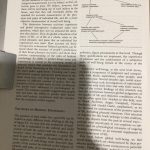ページコンテンツ
行動経済学の先駆者 – ダニエル・カーネマンの書籍
行動経済学の分野でのノーベル経済学賞を受賞したダニエル・カーネマン。これまで故エイモス・トベルスキーとともに本質をついた人間の行動、限界に焦点を当てた研究をこれまでしてきました。
本書は既に翻訳をされており、ダニエル・カーネマンの人柄、また業績、これまでの研究の成果を一般向けに解説した書籍、自身の書また、研究論文の編者として携わった英語での論文集をセレクトしました。論文集は数式もあり、英語ですがより知りたい方にはおすすめできるものを特にセレクトしました。より興味をもってみましたら行動経済学の書籍も読んでみましょう。
【最新 – 行動経済学おすすめ本 – 入門基本〜最先端応用まで】も確認する

ファスト&スロー あなたの意思はどのように決まるか?
カーネマンの研究業績/行動経済学の基礎
本書は、ノーベル経済学賞を受賞したダニエル・カールマンの代表的な著書です。著者は、ヒューリスティクスとバイアスが人間の意識の中に存在することを示したことが高く評価されていますが、本書では、第2部でそれらがテーマとして扱われています。
統計に関する直感が専門家であっても、バイアスが確認される事例や、アンカリング効果やハロー効果、利用可能性ヒューリスティクスなどの判断を誤らせる要因について説明しています。その前の第1部では、ファスト&スローのタイトルにもなっている早い思考のシステム1と遅い思考のシステム2について解説しています。直感的な思考であるヒューリスティクスと深く考える遅い思考の違いや関連の説明もしています。第3部では、自信過剰になりやすい人間の心理についてまとめています。
下巻の第3部の最後には、資本主義の原動力と題して、起業家が楽観主義であるとし、自信過剰であることの危険性を指摘しています。第4部では、プロスペクト理論や保有効果、メンタル・アカウンティングについてまとめています。人間は損失を回避したがり、買い物や株式投資の際に非合理的な判断をよく行いますが、それらの判断がなぜ取られるか、を理論的に説明しているため、普段、そのようなことを意識していない方には、新たな発見があるかもしれません。
第5部では、経験する自己と記憶する自己の二つの自己の関係性について解説しています。結論を下巻の後半に記しており、意思決定に関して、多くの視点があることに気付かされます。
行動経済学を知る6冊 – 入門・基本から最先端・応用まで –も確認する

目次 – ファスト&スロー あなたの意思はどのように決まるか?
序論
第1部 二つのシステム
第1章 登場するキャラクター
システム1 (速い思考)とシステム2(遅い思考)
第2章 注意と努力
衝動的で直感的なシステム1
第3章 怠け者のコントローラー
論理思考能力を備えたシステム2
第4章 連想マシン
私たちを誘導するプライム(先行刺激)
第5章 認知容易性
慣れ親しんだものが好き
第6章 基準、驚き、因果関係
システム1のすばらしさと限界
第7章 結論に飛びつくマシン
自分が見たものがすべて
第8章 判断はこう下される
サムの頭のよさを身長に換算したら?
第9章 より簡単な質問に答える
ターゲット質問とヒューリスティック質問
まとめ
第2部 ヒューリスティクスとバイアス
第10章 少数の法則
統計に関する直感を疑え
第11章 アンカー
数字による暗示
第12章 利用可能性ヒューリスティック
手近な例には要注意
第13章 利用可能性、感情、リスク
専門家と一般市民の意見が対立したとき
第14章 トム・Wの専攻
「代表性」と「基準率」
第15章 リンダ
「もっともらしさ」による錯誤
第16章 原因と統計
驚くべき事実と驚くべき事例
第17章 平均への回帰
誉めても叱っても結果は同じ
第18章 直感的予測の修正
バイアスを取り除くには
第3部 自信過剰
第19章 わかったつもり
後知恵とハロー効果
第20章 妥当性の錯覚
自信は当てにならない
第21章 直感 対 アルゴリズム
専門家の判断は統計より劣る
原注
索引
第3部 自信過剰(承前)
第22章 エキスパートの直感は信用できるか
直感とスキル
第23章 外部情報に基づくアプローチ
なぜ予想ははずれるのか
第24章 資本主義の原動力
楽観的な起業家
第4部 選択
第25章 ベルヌーイの誤り
効用は「参照点」からの変化に左右される
第26章 プロスペクト理論
「参照点」と「損失回避」という二つのツール
第27章 保有効果
使用目的の財と交換目的の財
第28章 悪い出来事
利益を得るより損失を避けたい
第29章 四分割パターン
私たちがリスクを追うとき
第30章 めったにない出来事
「分母の無視」による過大な評価
第31章 リスクポリシー
リスクを伴う決定を総合的に扱う
第32章 メンタル・アカウンティング
日々の生活を切り盛りする「心理会計」
第33章 選好の逆転
単独評価と並列評価の不一致
第34章 フレームと客観的事実
エコンのように合理的にはなれない
第5部 二つの自己
第35章 二つの自己
「経験する自己」と「記憶する自己」
第36章 人生は物語
エンディングがすべてを決める
第37章「経験する自己」の幸福感
しあわせはお金で買えますか?
第38章 人生について考える
幸福の感じ方
結論
謝辞
解説/友野典男
原注
付録B 選択、価値、フレーム
付録A 不確実性下における判断
ヒューリスティクスとバイアス
索引
序論
本を書く人なら誰でも、読者が自分の本から得た知識をどんな場面で活用するのか、頭の中に思い描いているのではないだろうか。
私の場合には、それは、オフィスでの井戸端会議である。意見を交換し噂話に盛り上がる、あれだ。読者が誰かの判断や選択を批評したり、会社の新しい方針や同僚の投資の品定めをしたりするときに、もっと正確で内容のある言葉を使ってほしいと私は考えている。なぜ井戸端会議に狙いを定めたのかといえば、他人の失敗を突き止めてあれこれ言うほうが、自分の失敗を認めるよりずっと簡単でずっと楽しいからだ。自分の信念や願望を疑ってみるのは、ものごとがうまくいっているときでも難しい。
しかも、それを最も必要とするときに一段と論難しくなる。だが、ちゃんと事情に通じた第三者の意見が聞こえてくれば、いろいろと得るものが多いことだろう。また私たちはたいていの場合、自分の判断を友人や同僚がどう評価するか、何となく予想がつくものである。となれば、予想されたその評価の質や内容が問題になってくる。さらに、根拠のある噂話での評価は、真剣に反省するきっかけにもなる。今年は会社でも家でも判断ミスを減らそう、といった新年の誓いを立てている人もいるかもしれないが、そうした誓いなどよりずっと強力な動機になるだろう。「医者はよい診断を下すために、大量の病気ラベルを頭の中にしまっておかなければならない。
ラベルは一つひとつ、病名と症状、前例と考えられる原因、起こりうる経過と予後、治癒または症状緩和のために可能な治療法と関連づけられている。医学を学ぶことの一部は、医学の言葉を学ぶことだ。同じように、判断と選択についての理解が深まるほど、日常用語では間に合わない語彙がどっさり必要になる。事情通の噂話からは、人間が犯すエラーの顕著なパターンが見つかると期待できる。
エラーの中でも特定の状況で繰り返し起きる系統的なエラーはバイアスと呼ばれ、予測が可能だ。たとえば自信たっぷりの美男子が講演会の壇上に上がったら、聴衆は彼の意見に本来以上に賛同すると予想がつく。このバイアスには「ハロー効果(Halo effect)」という診断名がついているので、予測することも、認識し理解することも容易になっている。
いま何を考えているのかと訊ねられたら、あなたはたぶんすらすら答えられるだろう。自分の頭の中で起きていることぐらいわかっているとほとんどの人が信じているし、ある考えから次の考えが浮かぶという具合に、順序立てて思考が進むと思っている。だが頭はいつもそういうふうに働くわけではないし、それが標準的であるとも言えない。
印象や考えのほとんどは、どこから出てきたのかわからないままに、意識経験の中に浮かび上がってくるものである。たとえば、目の前の机の上にデスクライトがあるという認識はどこから出てきたのか。電話に出た瞬間に妻(または夫)が怒っていることをなぜ察知できたのか。運転中、路上の障害物をはっきり認める前にどうやって回避できたのか――あなたは説明できないだろう。印象や直感、そして多くの決定を生み出す知的作業は、頭の中でひっそりと進められている。
本書で論じることの大半は、直感のバイアスと関係がある。とはいえ、医学書が病気に注意を払うからといって健康を否定するわけではないのと同じように、エラーを取り上げるからといって人間の知性を過小評価するつもりは毛頭ない。私たちの大半は、たいていは健康で、判断や行動もほとんどの場合はまずまず適切である。日常生活を送るうえで、ふだんはとくに迷わず印象や感覚に従い、自分の直感的な判断や好みがだいたいは正しかったと自信を持っている。だが、いつも正しいわけではない。私たちは、まちがっていながら自信たっぷりのことがよくある。そんなとき、客観的な第三者なら当人よりまちがいを発見しやすい。
井戸端会議に私が期待することをまとめておこう。まずは他人について、そして最終的には自分自身について、判断や選択のエラーを突き止め理解する能力を高めることである。そのために、本書ではより正確で適切な語彙を紹介していく。そして少なくともいくつかのケースでは、エラーの適切な診断によって、不適切な判断や選択が引き起こしがちなダメージを防ぐ治療法を提案できると考えている。
ダニエル・カーネマン 心理と経済を語る
カーネマンまるごと1冊
本書は、ダニエル・カーネマンのノーベル賞受賞記念講演、ノーベル賞受賞時に発表された自伝、カーネマンの行動経済学に関する論文のうち、一般読者にも分 かりやすいもの二本を訳出して一冊の本として編集したものになります。心理学者でありノーベル賞経済学をとったカーネマンの考え方が理解できます。

監訳者解説 – 友野典男
本書は、ダニエル・カーネマンの、ノーベル賞受賞記念講演(第1章)、ノーベル賞受賞時に発表された自伝(第2章)、カーネマンの行動経済学に関する論文のうち、一般読者にも分 かりやすいもの二本(第3、4章)を訳出して一冊の本として編集したものである。
なぜ本書を編んだのか。今、行動経済学が流行しつつあり、多くの本が出版されている。しかし行動経済学の創設者の一人であるカーネマンは(彼の共同研究者であり、行動経済学の立 役者の一人でもあるエイモス・トヴェルスキーもそうであるが)、一般向けの書物を著わしておらず、名前が知られている割には、彼の主張や論文の実際の内容について知る機会は少ないと思われるからである。それともう一つ、「行動経済学」=「人間の非合理性」という誤った理解が蔓延しているように見え、専門家を自認する人の本にさえ、そう断定してしまう間違った記述が見られるという状況がある。本書は、カーネマンの著作を通じてそのような誤解を解 き、行動経済学をさらに正しく深く理解してほしいという意図のもとに企画された。
ご存じのようにカーネマンは二〇〇二年に、アルフレッド・ノーベル記念スウェーデン国立銀行経済学賞(ノーベル経済学賞)を受賞した。カーネマンに対する授賞の理由は、「心理学 研究の洞察、特に不確実性下の人間の判断と意思決定に関する研究を、経済学に統合したこと」であり、行動経済学の基礎を固めたという点が評価されたのである。同時受賞したのが、当時ジョージ・メイソン大学(現チャップマン大学)教授のヴァーノン・K・スミスであった。スミスの受賞理由は、「実証経済分析のツールとして実験室実験を確立したこと、特に代替的な市場メカニズムの研究」であった。スミスの受賞理由ともなった経済学の実験的方法は行動経済学にも大きな影響を及ぼしているから、同年のノーベル経済学賞は、行動経済学の研究者 には強力な追い風となったのであり、この後行動経済学の研究はアメリカだけでなく、ヨーロッパや日本においても急速に展開されていくことになる。
余談になるが、カーネマンは、ノーベル「経済学」賞を受賞したが、自伝中で述べているように、経済学の授業を一度も受けたことがない。おそらく正式の経済学教育を受けていない初めてのノーベル経済学賞受賞者ではないだろうか。また彼は、ノーベル経済学賞は毎年二~三人貰うが、全米心理学会賞は年一人だから、そちらの方が貰うのは難しいという感想も述べている。
カーネマンが自伝中で繰り返し述べているように、トヴェルスキーとの偶然の出会い、そして長年に渡る共同研究がなければ、カーネマンの現在のような研究もあり得なかったであろう。トヴェルスキーは一九九六年に病気で死去したが、生きていればノーベル経済学賞を共同受賞したのは間違いない。またそうであれば、カーネマンの受賞の喜びもさらに深くなっていたであろう。
ちなみに、心理学者でノーベル経済学賞受賞者はカーネマンが最初ではなく、三〇年も前の 一九七八年に、当時カーネギー・メロン大学でまさに学際的研究に邁進していた心理学者のハーバート・H・サイモン(二〇〇一年没)が受賞している。現在の行動経済学でしばしば使われる言葉である「限定合理性」という概念を編み出したのが、サイモンである。しかしサイモンの業績は経済学界で言及されることは少なく、長い間忘れられたも同然であった。それを復活させ再び光を当てたのもカーネマンの功績であるということができる。
カーネマンの行動経済学関連の業績をまとめれば、大きく三つになる。一番目は、「ヒューリスティクとバイアス」研究である。本書第1章で詳しく述べられているように、人が判断をするときには、ヒューリスティクスという直感的判断を多用する。ヒューリスティクスは簡便であって素早く結論を出すことができるが、バイアスや間違いを生む原 因にもなることを、カーネマン はさまざまな実験で明らかにした。
二番目は、「プロスペクト理論」に関連するものである。第1章のノーベル賞記念講演で詳しく述べられており、第2章の自伝でも触れられている。人の判断は知覚に似ており、変化に は敏感に反応するが、同じ状態が続くと反応しない。経済学で言えば、効用(満足度)は最終 的な富の状態によって感じられるのではなく、参照点といわれる何らかの基準との違いやそこ からの変化に対して感じられるのである。つまり、基準に比べてより良くなったとかより悪く なったということが効用(満足度)をもたらす。これが行動経済学の意思決定理論であるプロスペクト理論の出発点である。
三番目は、「効用概念の再検討と幸福」である。これらは第3章と第4章で論じられる。幸 福とか人生の満足ということは、哲学や倫理学のテーマになることは多いが、経済学では長い 間忘れられていた話題である。この問題に光を当てることができるのが、幸福と生活上の満足というテーマであり、これは現在カーネマンが最も精力的に取り組んでいるテーマである。
このようにカーネマンの仕事は、行動経済学のほぼ全領域をカバーする幅広いものであるが、行動経済学の主要テーマに含まれる「社会的選好(人は自分自身の利益だけでなく、他者の利 益にも配慮して意思決定を行なうという性質)」と「時間選好(人は、現在を重視して、将来 を軽く見るという性質)」に関してはほとんど著作を発表していない。単なる憶測に留まるが、 たまたまそれらに関する論文を書くことがなかっただけであって、これらを軽視しているというわけではないことは、「自伝」からも窺える。
カーネマンの自伝(本書第2章)には、共同研究者あるいは論文の共著者として行動経済学の錚々たる人物の名前が挙がっている。シカゴ大学教授のリチャード・セイラーはカーネマン やトヴェルスキーと共に行動経済学者の創始者として名前が挙げられる立役者である。セイラーは、自伝中にはやんちゃながら洞察に溢れた若い研究者として描かれており、本書第3章の共著者でもある。セイラーは、イギリスのキャメロン政権の政策策定にも影響を及ぼしている。また、カーネマンの論文の共著者として名前が挙がっているシカゴ大学教授キャス・サンスティーンは、憲法が専門の気鋭の法律学者・法哲学者であり、行動経済学の法律への適用を目指す「法と行動経済学」という分野のパイオニアの一人である。現在はハーバード大学ロースクール教授に転じ、また政府の要職も兼務しており、オバマ政権の政策決定に少なからぬ影響力を持つ人物である。行動経済学の考え方が英米の政策当局から強く支持されていて、活用されつつあるのがわかる。
行動経済学の価値は、政策に応用されて有意義な結果をもたらしたときに初めてわかると言われることがあるが、その意味で、これからが行動経済学の真価が問われるときである。その出発点であるカーネマンの著作の一端を紹介することに本書の意義がある。
各章の内容について簡単に紹介しておこう。
第1章「限定合理性の地図」はノーベル賞受賞講演である。この講演内容をさらに詳細にした論文が、同名で『アメリカン・エコノミック・レビュー』誌に掲載されている。本章の内容 はノーベル賞の受賞理由となったトヴェルスキーとの共同研究、つまり不確実な状況で人がどのようにして判断し決定をするのかについて扱ったものであり、具体的な実験例を交えて、簡 潔に説明している。内容は少し高度に見えるが、図表を多用してわかりやすくなるように工夫されている。
内容は、意思決定を研究するための出発点となったアイディア、つまり視覚を主とする知覚と判断の類似性に着目した研究方法の紹介である。錯視(目の錯覚)という現象については、ご存知の方も多いだろう。パッと見て長さを判断すると、実は同じ長さであるのに、長さが違うように見えるというようなものである。判断も直感的に行なうとこれと同様な「認知的錯 覚」に陥ることが多いのである。人は何かを判断する時に、絶対値ではなく比較あるいは変化 で判断する。経済学の用語で言えば、効用は「富」の絶対量ではなく、参照点からの移動や変化で決定されるというプロスペクト理論の中心的考え方が、知覚の例を交えて語られる。
第2章「自伝」は、ノーベル賞を受賞した際に発表されたもので、カーネマンが自身の生い立ちや学問的関心の展開、そしてトヴェルスキーとの出会いから共同研究の様子などを生き生きと描写している。全体を通じて、カーネマンのトヴェルスキーに対する愛情が溢れ、早世の 友を惜しむ無念の気持ちが滲み出ている。
人間の判断や意思決定の特徴や行動経済学の考え方、さらに自らの学問に対する態度について述べた点も多く、学術論文を読むのでは得られない洞察や思想が語られていて貴重である。
特に、一○六頁の「われわれの研究が人間の非合理を実証するものだと言われたら、今なら即座にはねつけることができます」という部分は感銘深い。前述のように、行動経済学によって 人間の非合理性が示されたとか、人間の意思決定は基本的に非合理的であるという間違った印 象が広まっている感があるが、そのような誤解を一蹴してくれる一文である。
また、カーネマンとトヴェルスキーの主張を誤解ないし曲解した反論にも反批判をしないことにしたという方針も興味深い。「止むに止まれぬ思いで、一つだけ例外を作」ったとあるが、これはドイツの心理学者ゲルト・ギゲレンツァとそのグループに対するものであり、彼らのカーネマンらに対する批判が熾烈でかつ当を得たものとは言い難かったからであろう。
第3章「効用最大化と経験効用」は、行動経済学の創設者の一人であるシカゴ大学のリチャード・セイラーとの共著論文であり、『ジャーナル・オブ・エコノミック・パースペクティブ ズ』の連載コラム「アノマリー」の一本として発表されたものである。同誌はアメリカ経済学会発行の学術誌でありながら、専門に深入りすることなく、経済学に関心を持つ広い読者層を対象にした雑誌であり、この論文も、経済学に関心を抱く一般の人にも十分読んで頂けるものである。
標準的な経済学では、意思決定主体は自分の確固とした選好を持っており、それに基づいて効用を最大化するような選択肢を選択することが前提とされている。カーネマンとセイラーは、このような標準的経済学の前提を覆すさまざまな実験例を用いて、効用概念の再検討と安定的 な選好という考え方に再考を迫っている。
この論文で彼らは、経済学で通常用いられている効用という概念は二つの意味を持っており、それらを区別する必要があるというところから出発する。一つはジェレミー・ベンサムに発し、ジョン・スチュアート・ミルからフランシス・エッジワースへと続く功利主義的効用概念であり、「経験効用」と呼ばれる。もう一つは「決定効用」と呼ばれ、現代の標準的経済学が採用している考え方であり、人々が行なった選択の結果から推論されるものである。
本章の論文でカーネマンとセイラーは、人がいったい経験効用を最大化することができるのかという疑問を呈し、人は自分の好み(選好)を意外なほどわかっていないし、将来自分が何 を好むかの予想にも失敗するという、衝撃的で興味深い結論を、彼ら自身や他の研究者の面白い実証結果を引用しながら示している。
第4章「主観的な満足の測定に関する進展」は、やはり『ジャーナル・オブ・エコノミック・パースペクティブズ』に発表された論文で、プリンストン大学教授アラン・B・クルーガーとの共著である。
幸福とか生活上の満足といった数値をどのように測定するかについての論文であり、著者らはU指数という新しい指標を提案する。これは、一種の「経済的な不快指数」であり、「人が好ましくない状態で過ごす時間の割合を測定する」ものであって、対象者の自己申告によって測定される。この値が小さい方が満足度は高いと見なせるわけである。彼らの調査によってわかったことの一つは、消費ではなく社会的接触、つまり他者との触れ合い時間が長いほどU指 数は小さいということである。このような、人生におけるあるいは生活上の満足や幸福の測定 法が確定すれば、個人所得やGNP、GDPなどに代わる幸福指標として、福祉政策を初めと する経済・社会政策や人生設計においても役立つことになる。
主に第4章に関連する訳語上の問題について一つだけお断りしておく。この論文でもそうだ が、他の経済学や心理学の文献に関しても、”well-being” と “happiness” の訳し分けについて悩むことが多い。happinessについては「幸福」や「幸せ」で問題無いが、困るのは well-being の方である。文字どおり解釈すれば「善く生きること」であるから、「善生」と訳してあるのを見かけたことがあるが、どうもしっくりこない。そこで、本書では単に、「満足」と訳すことにした。妙訳をご存じの方がいらっしゃったら、ぜひご教示をお願いする次第である。
続いて、本書ではほとんど触れられなかったカーネマンの研究テーマについて触れるとともに、本書収録の論文は最も新しいものでも二〇〇六年の出版であるので、その後のカーネマンの研究や考え方について、簡単に紹介しておこう。
まず本書ではほとんど触れられていないが、最近注目を集めている「神経経済学」(ニュー ロエコノミクス)についてカーネマンはどう考えているのであろうか。神経経済学とは、脳科 学と経済学が融合した、まったく新しい学問であり、脳の活動を測定することで、行動の結果だけを見たのではわからない意思決定の側面を脳にアプローチすることで理解しようとする。たとえば、二つの選択肢の一つが選ばれた時、それを選んだのが理性的な判断によるものか、あるいは感情的に選んだのかは、選択の結果だけを外から見たのではまったくわからない。しかし選択の過程において脳のどの部位が活性化するのかを測定すれば、どちらの理由であったのかが判明するのであり、こうしたことから神経経済学は、選択や意思決定に関して新しい知 見が得られる可能性が大きいと期待される学問である。
カーネマンは、二〇〇一年に「金銭的利得と損失の予測と経験に関する神経反応の機能的画像測定」という論文を脳科学者であるハンス・ブライターらと共著で『ニューロン』誌に発表している。この論文はタイトル通り、人が利得と損失を経験した場合と予測する場合に、脳のどの部位が活性化するのかを、fMRI(機能的磁気共鳴画像法)を用いて測定している。その結果、利得と損失では活性化の程度や部位が異なること、実際に報酬が得られた場合だけ でなく、報酬の予測だけでも快が得られることなどがわかった。カーネマンの神経経済学に関する論文はこれ一本だけであるが、多数の脳科学者や行動経済学者の論文が収録された『ニュ loエコノミクス』(アカデミック・プレス)という大著に後書きを寄せ、この分野には以前から関心を持っており、神経経済学の研究成果が人間行動や意思決定の研究に対して持つ意味は大きいと期待を込めて述べている。
最近のカーネマンはというと、ヒューリスティクス概念の彫琢とともに、幸福と人生の満足 度の研究に集中しているようである。二〇一〇年に同僚のアンガス・ディートンと著した最新 の論文「高収入は人生の評価を高めるが、感情的満足は高めない」(『全米科学アカデミー会 報』)では、ギャラップ社と行なった大規模な調査に基づき、日々の感情的満足と人生全体の満足度を測定した。それによると、日々の幸せは年収の増加とともに上昇するが、年収七万五○○○ドルを超えるともう伸びない。一方人生の満足度の方は、年収とともに上昇し、上限は ないことがわかった。つまりより多くのお金で人生の満足は買えるが、日々の幸福は買えない ということになる。味わい深いが、多様な解釈ができる結論である。
あるインタビューで「人生の満足を高めるためにどうしたらよいか」と尋ねられたカーネマンは次のように答えている(The Interview: The Most Important Living Psychologist, The Psychologist, 22(1), 2009)。――それは三つある。一時間の使い方を変えなさい。時間は究 極の稀少資源だから、そうであるように使うべき。二人生を悪くするようなことではなく、人生を豊かにするようなことがらに注意を向けるべき。三.注意を払い続けるような活動に時間を投資すべき。新車を買って運転しても、車にはそれほど注意を払わなくなる。しかし友人と社交しているときには、その活動に注意を払っている。そのような活動に従事すべきだ。
カーネマンの研究成果とこのインタビューによって、私たちが日々の幸せと人生の満足度を高められるようになれば幸いである。
最後に、昨今のような出版不況の折に、本書のような堅い書物を出版するという英断を下された楽工社の日向泰洋氏と、難しい言い回しや専門用語を含む原典を、わかりやすい日本語にして下さった翻訳家の山内あゆ子さんに敬意を表します。
目次
監訳者解説 友野典男
第1章 ノーベル賞記念講演 限定合理性の地図
本講演の三つのテーマ
知覚が、直接利用できる特徴と、直接利用できない特徴がある
直感は高度なことをするが、系統だったバイアスやエラーも犯す
知覚の特性①―「変化」に集中し「状態」を無視する
単なる賭けと、富(財産)を考えに入れた場合の賭けでは、好まれ方に違いが生じる
ベルヌーイの偉大なアイデア
―賭けは期待される貨幣の価値 (金額) ではなく、期待される心理的価値 (効用=満足度)で評価される
ベルヌーイの誤り
―賭けをする者は現在の富と未来の富の状態を「比較」して効用 (満足度)を測る
プロスペクト理論
―効用 (満足度) を決めるのは「変化」であって、「状態」(富の絶対量) ではない
心理学的な誤りが経済学で使われてきたのは、経済主体は合理的とする説に合致するから
無差別曲線の欠点―富の最終的な量は示されるが現在の状況は示されない
知覚の特性②―足し算をすべきときに平均値を求めてしまう
a 1つのグループになった物を評価する場合
b 一連の観察結果の証拠を評価する場合
c ある人が、あるグループもしくはカテゴリーに属すかどうかを判断する場合
d あるエピソードを評価する場合
まとめ
第2章 自伝
ダニエル・カーネマン 年譜
幼少期
青春時代
軍隊経験
大学院時代
プロになるためのトレーニング
エイモス・トヴェルスキーとの共同研究
一九七四年「サイエンス」誌の論文と合理性論争
プロスペクト理論
フレーミングと心の会計
行動経済学
その後
エイモス・トヴェルスキー追悼 (一九九六年六月五日)
第3章 効用最大化と経験効用
序
現在の感情状態の影響
選択状況の影響
過去に学ぶ
適応の予測の誤り
コメント
第4章 主観的な満足の測定に関する進展
主観的経験の測定原理と、実験室での測定
生活上の満足と幸せについての調査
生活上の満足に関するデータが有効な証拠
時間の使い方の評価
適応の謎
社会的な満足の測定 ―U指数
まとめ
参考文献
原注
かくて行動経済学は生まれり
ベストセラー作家が書いたカーネマン
世紀の空売りやマネーボールといったベストセラーを生み出したマイケル・ルイスの新作となります。本書では行動経済学の背後にある基本的な研究の多くをした2人の心理学者であるノーベル賞受賞者であるダニエル・カーネマンと共同研究者であるエイモス・トベルスキーの2人の伝記になる位置づけです。
カーネマンのこれまでのやってきたことなどは、「ファスト&スロー」でのまとまりがありますが、本書ではそのような研究がどのようになされたのかというバックグラウンド、この2人がどのような生い立ちに焦点を当てています。

目次
序 章 見落としていた物語
野球界にはびこるさまざまなバイアスと、それを逆手にとった貧乏球団のGMを描いた『マネー・ボール』。その刊行後、わたしはある批判的な書評を目にした。「著者は、野球選手の市場がなぜ非効率的なのか、もっと深い理由があることを知らないようだ」。その記事には二人の心理学者の名前が挙げられていた。
第1章 専門家はなぜ判断を誤るのか?
あるNBAチームのGMは、スカウトの直感に不信感を抱いていた。彼らは自分にとって都合の良い証拠ばかりを集める「確証バイアス」に陥っていたのだ。彼らの頭の中では、いったい何が起きているのか。それは、かつてダニエル・カーネマンとエイモス・トヴェルスキーが直面し、解き明かした問題だった。
第2章 ダニエル・カーネマンは信用しない
ナチスからの過酷な逃亡生活を経たダニエルは、終戦後、独立戦争さなかのイスラエルに向 かった。戦争中の体験から「人の頭の中」に強い興味を抱いた彼は、軍の心理学部隊に配属
される。そこで課せられたのは、国家の軍事力を高めるべく、新人兵士の適性を正確に見抜
く方法を作成せよという難問だった。
第3章 エイモス・トヴェルスキーは発見する
高校卒業後、イスラエル軍の落下傘部隊に志願したエイモス。闘士として戦場を駆け回った 彼は、創設直後のヘブライ大学心理学部に入学する。「CよりB、BよりAが好きな人は、
必ずCよりAが好き」という人間像を前提とした既存の経済理論に疑問を持った彼は、刑務
所の囚人を集めてある実験を行なった。
第4章 無意識の世界を可視化する
人間の脳は無意識のうちにどんな働きをしているのか。その研究にとりかかったダニエルは やがて視覚に辿りつく。人の瞳孔は、好ましいものを見ると大きくなり、不快なものを見る と小さくなる。そしてその変化のスピードは、人が自分の好みを意識するより早かった。彼 –
は、目から人の頭の中をのぞき始めた。
第5章 直感は間違える
「人の直感は、統計的に正しい答えを導き出す」。長らく信じられてきたその通説を打ち破
ったのは、ヘブライ大学で出会ったダニエルとエイモスの二人だった。たとえ統計学者で
も、その直感に頼った判断はいとも簡単に間違うことを証明した二人の共同論文は、それま
での社会科学に反旗を翻すものだった。
第6章 脳は記憶にだまされる
専門家の複雑な思考を解明するため、オレゴン研究所の心理学者たちは医師に簡単な質問を
して、ごく単純なアルゴリズムを作成した。だが、手始めに作られたその「未完成のモデ
ル」は、どの有能な医師よりも正確にがんの診断を下せる「最高の医師」になってしまっ
た。いったいなぜそんなことが起きたのか?
第7章 人はストーリーを求める
歴史研究家は偶然にすぎない出来事の数々に、辻褄のあった物語をあてはめてきた。それ
は、結果を知ってから過去が予測可能だったと思い込む「後知恵バイアス」のせいだ。スポ
ーツの試合や選挙結果に対しても、人の脳は過去の事実を組み立て直し、それが当たり前だ
ったかのような筋書きを勝手に作り出す。
第8章 まず医療の現場が注目した
北米大陸では、自動車事故よりも多くの人が、医療事故で命を落としていた。医師の直感的
な判断に大きな不信感が漂うなか、医学界はダニエルとエイモスの研究に注目。医師の協力
者を得た二人は、バイアスの研究を次々と医療に応用し始める。そしてダニエルは、患者の
「苦痛の記憶の書き換え」に成功する。
第9章 そして経済学も
「人は効用を最大にするように行動する」。この期待効用理論は、経済学の大前提として広 く受け入れられてきた。だがそれでは、人が宝くじを買う理由すら説明できない。その矛盾
に気づいたダニエルとエイモスは、心理学の知見から新たな理論を提唱する。その鍵となっ たのは、効用ではなく「後悔」だった。
第10章 説明のしかたで選択は変わる
六百人中、二百人が助かる治療法と、四百人が死ぬ治療法。この二つの選択肢はまったく同
じ意味であるにもかかわらず、人はその説明の違いに応じて異なる反応を見せる。ダニエル
とエイモスが見つけたこの「プロスペクト理論」は、合理的な人間像を掲げてきた既存の経
済学を、根底から揺るがすことになる。
第11章 終わりの始まり
共同研究に対する賞賛は、エイモス一人に集中した。その状況に対し、徐々に妬ましさを感
じ始めたダニエルは、エイモス抜きで新たな研究に取り掛かる。人が「もう一つの現実」を
想像するときのバイアスに注目したそのプロジェクトが進行するなか、十年間に及ぶ二人の
友情の物語は終焉へと近づいていく。
第12章 最後の共同研究
ダニエルとエイモスの格差は広がる一方だった。そんななか、かつての指導教官をはじめ、 彼らの研究は各方面からの攻撃に曝される。その反撃のため二人は再び手を組むも、ダニエ ルはその途中でエイモスと縁を切る決意を固める。二人の関係が終わったその直後、エイモ スは医師から余命六か月と宣告される。
終 章 そして行動経済学は生まれた
脳には限界があり、人の注意力には穴がある。ダニエルとエイモスが切り拓いたその新たな
人間像をもとに、「行動経済学」は生まれた。エイモスの死後、その権威となったダニエル
は、ノーベル経済学賞の候補者に選ばれる。発表当日、一人連絡を待つダニエルの胸には、
エイモスへのさまざまな思いがよぎる。
参考文献について
謝辞
訳者あとがき
解説 「ポスト真実」のキメラ 月刊誌『FACTA』主筆 阿部重夫
タイトルをクリックするとその文章が表示されます。
序 章 見落としていた物語
野球界にはびこるさまざまなパイアスと、それを逆手にとった貧乏球団のGMを描いた『マネー・ボール』。その刊行後、わたしはある批判的な書評を目にした。「著者は、野球選手の市場がなぜ非効率的な のか、もっと深い理由があることを知らないようだ」。その記事には二人の心理学者の名前が挙げられていた。
二〇〇三年、わたしは『マネー・ボール』という本を書いた。それは、いかに野球選手を評 価し、チームの戦略を立てていくかについて、新しく優れた方法を追い求めたオークランド・アスレチックスの物語だ。他球団よりも選手に使える資金が少ないために、アスレチックスのフロントは戦略を見直さざるをえなかった。新旧のデータを掘り起こし、それを野球の門外漢が分析することで、新しい戦略を見つけ出したのだ。それによって、彼らは他球団のフロントを出し抜くことができた。アスレチックスはそれまで見捨てられていた、あるいは見逃されて いた選手に価値を見いだし、野球界で常識だと考えられていたことの多くが間違いだったと気 がついた。
本が発売されると、頭の固いフロントやスカウト、ジャーナリストなどの一部の野球関係者 は憤慨して酷評したが、多くの読者はわたしと同じようにその物語をおもしろいと思ってくれ た。アスレチックスのチームのつくり方から、野球だけにとどまらない一般的な教訓を見いだ したのだ。一八六〇年代から続くプロ野球という世界で、高額の報酬を得て世間の目にさらさ れている選手であっても、市場から正しく評価されていないというのなら、他の業界でも同じ ことが起きているはずではないか? 野球選手の市場が非効率的というのなら、効率のいい市 場などあるのだろうか? 新たな分析法によって、野球の世界でこれまでにない戦略が見つか ったというのなら、人間のあらゆる活動においても、同じ手法が使えるのではないか?
この十年ほど、多くの人々がアスレチックスをロールモデルとして、よりよいデータを使 い、よりよい分析を行なって、市場の非効率性を指摘するようになってきた。わたしはありと あらゆる分野のマネー・ボールについての記事を読んだ。教育のためのマネー・ボール、映画 スタジオのためのマネー・ボール、メディケアのためのマネー・ボール、ゴルフのためのマネ ー・ボール、農場経営のためのマネー・ボール、出版のためのマネー・ボール(!)、大統領 選のためのマネー・ボール、政府のためのマネー・ボール、銀行員のためのマネー・ボールな どだ。 「いきなり、おれたちがオフェンシブ・ラインマンをマネー・ボールしている。なんて言わ れてさ」と、二〇一二年にニューヨーク・ジェッツのあるコーチが不平をもらした。
また、ノースカロライナ州議会がデータをずる賢く利用して、アフリカ系アメリカ人が投票しづらくする法律をつくろうとしたのを見て、コメディアンのジョン・オリヴァーは「マネー・ボール的人種差別だ」と皮肉った。しかし、古い専門家の知識を新しいデータ分析に置きかえようとする挑戦は、表面的であることが多かった。データに基づいて下された重大な意思決定が、すぐ結果につながらないと―ときには結果につながったとしてもー、昔ながらのやり方を用いたときにはなかったほどの、容赦ない攻撃にさらされた。
二〇〇四年、アスレチックスをまねたボストン・レッドソックスは、ほぼ百年ぶりにワール ド・シリーズを制覇した。同じ手法で二〇〇七年と二〇一三年にも優勝した。だが不本意な三 シーズンを経た二〇一六年、レッドソックスはデータに基づく手法を捨て、専門家の判断に再 び任せることにしたと発表した(「われわれはおそらく数字に頼りすぎたんだ……」と、オーナーのジョン・ヘンリーは言った)。ライターのネイト・シルバーは数年間、ニューヨークタイムズ紙でアメリカ大統領選の結果を正確に予測し、目覚ましい成功をおさめた。彼は、野球記事を書くときに身につけた統計学的手法を用いたのだ。一介の新聞が選挙予測で他をリードしたのは、記憶にあるかぎり初めてのことだった。
ところが、シルバーがニューヨークタイムズを去り、ドナルド・トランプの快進撃を予測し損ねると、彼の統計学的手法に疑問が突きつけられた。それも、ほかならぬニューヨークタイムズからだ!「足で稼ぐ地道な報道に勝るものはない。政治は本質的に人間の営みだ。だから、予測や理屈を裏切ることもある」と、二〇一六年春の終わりにニューヨークタ イムズのコラムニストが書いている(とはいえ、地道な取材を重ねた記者のほとんどもトラン プの躍進を予測できなかったし、シルバーものちに、トランプは型破りであるために、予測に いつになく主観が入り込んでしまったと認めているが、それらはとりあえず置いておこう)。
たしかに、データを使って現状を把握し、業界の非効率性を突いたと主張する人々への批判 には、的を射た部分もある。しかし、アスレチックスが逆手に取った人間心理に潜む何か、す なわち確実なことなど何もない状況でも、確実だと言ってくれる専門家を求めてしまう心の働 きは、しぶとく生き残り続ける。殺されたはずなのに、なぜか最後の場面で生き返る映画の怪 獣のようなものである。やがてわたしの本への反応も落ち着いたが、その指摘の中にきわだって重要と思えるものが一つあった。当時はシカゴ大学に所属していた二人組、リチャード・セイラーという経済学者 と、キャス・サンスティーンという法律学教授による書評だ。
二〇〇三年八月三十一日付の『ニューリパブリック』に掲載されたその書評は、好意的であると同時に手厳しいものだった。プロスポーツの市場は混乱しているので、その非効率性を逆手に取って、アスレチックスのような貧乏チームが潤沢な資金を持つチームの多くを出し抜けるのは興味深い現象だというこ とについては、彼らも賛同してくれた。しかし、と二人は続けていた。『マネー・ボール』の著者は、野球選手の市場がなぜ非効率的なのか、もっと深い理由があることを知らないようだ、と。
それは人間の頭の中の働きから生じている――そして、野球の専門家がなぜ選手を見誤るのか、またどんな分野の専門家でも、その人自身の頭の中でなぜ判断が歪められてしまう のかについては、すでに何年も前に説明がなされている。それを行なったのは、二人のイスラ エル人心理学者、ダニエル・カーネマンとエイモス・トヴェルスキーである、と。わたしの本 はそれまで誰も気づかなかったことを明らかにしたわけではなかった。わたしは単に、何十年 も前から取り沙汰されていたのに、わたしも含め世間からきちんと評価されていなかったアイ デアを書き出しただけだったのだ。
いや、それどころではない。その記事が出るまで、わたしはカーネマンのこともトヴェルス キーのことも知らなかった。そのうちの一人はノーベル経済学賞まで受賞しているというの に。それに実を言えば『マネー・ボール」の心理学的側面など、ほとんど考えたこともなかった。野球選手の市場は非効率なことで溢れている。それはなぜなのか? アスレチックスのフロントは市場におけるバイアス” について語っていた。たとえば足の速さが必要以上に評価されるのは、それが目に見えやすいからだし、選球眼があまり評価されないのは、四球がすぐに忘れられるからだ―四球を選んでも、ただ立っていただけだと思われる。
アスレチックスのフロントが語るこうしたバイアスを、わたしはおもしろいと思ったが、さらに踏み込んで尋ねることはしなかった。そのバイアスはどこから来ているのか? なぜ人間はそのようなバイアスを持つのか?
わたしは特に、人を評価するときに市場がどう働くのか、あるいはなぜうまく働かないのか についての話を書こうとしていた。しかし、判断を下したり意思決定を行なったりするとき、人の頭がどう働くのか、あるいはなぜうまく働かないのかについては、また別の話として心の 奥底にしまいこみ、深く掘り下げることも語ることもしなかった。
投資や人物評価などの不確実なことを目前にしたとき、人はどのようにして結論に辿りつく のだろうか? 野球の試合から収益報告書、実験、健康診断、お見合いパーティーにいたるま で、わたしたちは目の前のデータをどう処理しているのだろうか?また、その道のプロと言われる人であっても判断を誤り、専門家ではなくデータに頼る人の踏み台にされている。その 判断ミスをする人の頭の中では、何が起きているのだろうか? そして二人のイスラエル人心 理学者が、なぜこうした問題について多くを明らかにするようになったのだろうか? まるで何十年かあとに、アメリカのプロ野球についての本が出るのを予想していたかのように 。
何が二人の中東の男をとらえ、野球選手や投資や大統領候補者について判断するときの脳の 働きについて、奥深い研究へと向かわせたのだろうか? そしていったいなぜ心理学者がノー ベル経済学賞を受賞したのだろうか? これらの疑問に答えるために、また語るべき物語が浮 かび上がった。それをこれから語っていこう。
第1章 専門家はなぜ判断を誤るのか?
あるNBAチームのGMは、スカウトの直感に不信感を抱いていた。彼らは自分にとって都合の良い証拠ばかりを集める「確証バイアス」に陥っていたのだ。彼らの頭の中では、いったい何が起きているのか。それは、かつてダニエル・カーネマンとエイモス・トヴェルスキーが直面し、解き明かした問題だった。
面接室にいる若者が何を言い出すか、誰にも予想がつかない。ときにまどろんだ意識からハッと目覚めて、注意を惹きつけられる言葉が飛び出すものだ。いったん気にしだすと、彼らが 言ったことを必要以上に重く捉えてしまう。全米バスケットボール協会(NBA)の面接でもっとも忘れがたい瞬間の数々は、ふつうの頭では処理しきれないようなものばかりだ。ときに は、その場を選手がぶち壊しにかかっているのではないかとさえ感じることもある。
Judgment under Uncertainty: Heuristics and Biases
人々の不確実の中での判断
人々が判断を行う時。一般に経験則としてのヒューリスティックは非常に役立ちますが、重大で体系的なエラーを引き起こすことがあります。確率の主観的評価は、距離やサイズなどの物理量の主観評価に似ています。これらの判断はすべてヒューリスティックルールに従って処理される有効性の限られたデータに基づいています。その時に出る人々のバイアスからくるエラーについても認知科学の側面から面白みがあります。

Contents
List of contributors
Preface
Part I: Introduction
1 Judgment under uncertainty: Heuristics and biases
Amos Tversky and Daniel Kahneman
Part II: Representativeness
2 Belief in the law of small numbers
Amos Tversky and Daniel Kahneman
3 Subjective probability: A judgment of representativeness
Daniel Kahneman and Amos Tversky
4 On the psychology of prediction
Daniel Kahneman and Amos Tversky
5 Studies of representativeness
Maya Bar-Hillel
6 Judgments of and by representativeness
Amos Tversky and Daniel Kahneman
Part III: Causality and attribution
7 Popular induction: Information is not necessarily informative
Richard E. Nisbett, Eugene Borgida, Rick Crandall,
and Harvey Reed
8 Causal schemas in judgments under uncertainty
Amos Tversky and Daniel Kahneman
9 Shortcomings in the attribution process: On the origins
and maintenance of erroneous social assessments
Lee Ross and Craig A. Anderson
10 Evidential impact of base rates
Amos Tversky and Daniel Kahneman
Part IV: Availability
11 Availability: A heuristic for judging frequency and probability
Amos Tversky and Daniel Kahneman
12 Egocentric biases in availability and attribution
Michael Ross and Fiore Sicoly
13 The availability bias in social perception and interaction
Shelley E. Taylor
14 The simulation heuristic
Daniel Kahneman and Amos Tversky
Part V: Covariation and control
15 Informal covariation assessment: Data-based versus
theory-based judgments
Dennis L. Jennings, Teresa M. Amabile, and Lee Ross
16 The illusion of control
Ellen J. Langer
17 Test results are what you think they are
Loren J. Chapman and Jean Chapman
18 Probabilistic reasoning in clinical medicine: Problems and
opportunities
David M. Eddy
19 Learning from experience and suboptimal rules in
decision making Hillel J. Einhorn
Part VI: Overconfidence
20 Overconfidence in case-study judgments
Stuart Oskamp
21 A progress report on the training of probability assessors
Marc Alpert and Howard Raiffa
22 Calibration of probabilities: The state of the art to 1980
Sarah Lichtenstein, Baruch Fischhoff, and Lawrence D. Phillips
23 For those condemned to study the past: Heuristics and
biases in hindsight
Baruch Fischhoff
Part VII: Multistage evaluation
24 Evaluation of compound probabilities in sequential choice
John Cohen, E. I. Chesnick, and D. Haran
25 Conservatism in human information processing
Ward Edwards
26 The best-guess hypothesis in multistage inference
Charles F. Gettys, Clinton Kelly III, and Cameron R. Peterson
27 Inferences of personal characteristics on the basis of
information retrieved from one’s memory
Yaacov Trope
Part VIII: Corrective procedures
28 The robust beauty of improper linear models in decision
making
Robyn M. Dawes
29 The vitality of mythical numbers
Max Singer
30 Intuitive prediction: Biases and corrective procedures
Daniel Kahneman and Amos Tversky
31 Debiasing
Baruch Fischhoff
32 Improving inductive inference
Richard E. Nisbett, David H. Krantz, Christopher Jepson,
and Geoffrey T. Fong
Part IX: Risk perception
33 Facts versus fears: Understanding perceived risk
Paul Slovic, Baruch Fischhoff, and Sarah Lichtenstein
Part X: Postscript
34 On the study of statistical intuitions
Daniel Kahneman and Amos Tversky
35 Variants of uncertainty
Daniel Kahneman and Amos Tversky
References
Index
Contributors
*Marc Alpert Graduate School of Business Administration, Harvard University Teresa M. Amabile Department of Psychology, Brandeis University Craig A. Anderson Department of Psychology, Stanford University Maya Bar-Hillel Department of Psychology, The Hebrew University,
Jerusalem
Eugene Borgida Department of Psychology, University of Minnesota
Jean Chapman Department of Psychology, University of Wisconsin
Loren J. Chapman Department of Psychology, University of Wisconsin
*E. I. Chesnick Department of Psychology, University of Manchester, England
John Cohen Department of Psychology, University of Manchester, England
Rick Crandall University of Illinois, Champaign-Urbana
Robyn M. Dawes Department of Psychology, University of Oregon
David M. Eddy Center for the Study of Health and Clinical Policy, Duke
University
Ward Edwards Social Science Research Institute, University of Southern
California
Hillel J. Einhorn Center for Decision Research, University of Chicago
Baruch Fischhoff Decision Research, A Branch of Perceptronics, Inc., Eugene,
Oregon
Geoffrey T. Fong Institute for Social Research, University of Michigan
Charles F. Gettys Department of Psychology, University of Oklahoma
*D. Haran Department of Psychology, University of Manchester, England
Dennis L. Jennings Department of Psychology, New York University
Christopher Jepson Institute for Social Research, University of Michigan
Daniel Kahneman Department of Psychology, University of British Columbia
Clinton Kelly III Advanced Research Projects Agency, Arlington, Virginia
David H. Krantz Bell Laboratories, Murray Hill, New Jersey
Ellen J. Langer Department of Psychology, Harvard University
* Asterisk indicates affiliation when article was originally published.
Sarah Lichtenstein Decision Research, A Branch of Perceptronics, Inc.
Eugene, Oregon
Richard E. Nisbett Institute for Social Research, University of Michigan
Stuart Oskamp Department of Psychology, Claremont Graduate School
Cameron R. Peterson Decisions & Designs, Inc., McLean, Virginia
Lawrence D. Phillips Decision Analysis Unit, Brunel University
Howard Raiffa Graduate School of Business Administration, Harvard
University
Harvey Reed Department of Psychology, University of Michigan at Dearborn
Lee Ross Department of Psychology, Stanford University
Michael Ross Department of Psychology, University of Waterloo, Ontario
Fiore Sicoly Department of Psychology, University of Waterloo, Ontario
Max Singer Hudson Institute, Arlington, Virginia
Paul Slovic Decision Research, A Branch of Perceptronics, Inc., Eugene,
Oregon
Shelley E. Taylor Department of Psychology, University of California, Los
Angeles
Yaacov Trope Department of Psychology, The Hebrew University, Jerusalem
Amos Tversky Department of Psychology, Stanford University
Preface
The approach to the study of judgment that this book represents had origins in three lines of research that developed in the 1950s and 1960s: the comparison of clinical and statistical prediction, initiated by Paul Meehl; the study of subjective probability in the Bayesian paradigm, introduced to psychology by Ward Edwards; and the investigation of heuristics and strategies of reasoning, for which Herbert Simon offered a program and Jerome Bruner an example. Our collection also represents the recent convergence of the study of judgment with another strand of psychological research: the study of causal attribution and lay psychological interpretation, pioneered by Fritz Heider.
Meehl’s classic book, published in 1954, summarized evidence for the conclusion that simple linear combinations of cues outdo the intuitive judgments of experts in predicting significant behavioral criteria. The lasting intellectual legacy of this work, and of the furious controversy that followed it, was probably not the demonstration that clinicians performed poorly in tasks that, as Meehl noted, they should not have undertaken. Rather, it was the demonstration of a substantial discrepancy between the objective record of people’s success in prediction tasks and the sincere beliefs of these people about the quality of their performance.
This conclusion was not restricted to clinicians or to clinical prediction: People’s impressions of how they reason, and of how well they reason, could not be taken at face value. Perhaps because students of clinical judgment often used themselves and their friends as subjects, the interpretation of errors and biases tended to be cognitive, rather than psychodynamic: Illusions, not delusions, were the model.
With the introduction of Bayesian ideas into psychological research by Edwards and his associates, psychologists were offered for the first time a fully articulated model of optimal performance under uncertainty, with which human judgments could be compared. The matching of human
of the major paradigms iv. it led to concerns ne and the methods eflected in most of ich of the early work nance and introduced otimality. In contrast, lain both correct and judgments to normative models was to become one of them of research on judgment under uncertainty.
Inevitably it , with the biases to which inductive inferences are prone and the that could be used to correct them. These concerns are reflect the selections in the present volume. However, much of the ea, used the normative model to explain human performance and in separate processes to explain departures from optimality. In research on judgmental heuristics seeks to explain both corre erroneous judgments in terms of the same psychological processes.
The emergence of the new paradigm of cognitive psychology me profound influence on judgment research. Cognitive psycholoou concerned with internal processes, mental limitations, and the way in which the processes are shaped by the limitations. Early examples as conceptual and empirical work in this vein were the study of strategiesne thinking by Bruner and his associates, and Simon’s treatment of heuristica of reasoning and of bounded rationality.
Bruner and Simon were both concerned with strategies of simplification that reduce the complexity of judgment tasks, to make them tractable for the kind of mind that people happen to have. Much of the work that we have included in this book was motivated by the same concerns.
In recent years, a large body of research has been devoted to uncovering judgmental heuristics and exploring their effects. The present volume provides a comprehensive sample of this approach. It assembles new reviews, written especially for this collection, and previously published articles on judgment and inference. Although the boundary between judgment and decision making is not always clear, we have focused here on judgment rather than on choice. The topic of decision making is important enough to be the subject of a separate volume.
The book is organized in ten parts. The first part contains an early review of heuristics and biases of intuitive judgments. Part II deals specifically with the representativeness heuristic, which is extended, in Part III, to problems of causal attribution. Part IV describes the availability heuristic and its role in social judgment. Part V covers the perception and learning of covariation and illustrates the presence of illusory correlations in the judgments of lay people and experts.
Part VI discusses the calibration of probability assessors and documents the prevalent phenomenon of overconfidence in prediction and explanation. Biases associated with multistage inference are covered in Part VII. Part VIII reviews formal and informal procedures for correcting and improving intuitive judgments. Part IX summarizes work on the effects of judgmental biases in a specific area of concern, the perception of risk. The final part includes some current thoughts on several conceptual and methodological issues t pertain to the study of heuristics and biases.
For convenience, all references are assembled in a single list at the of the book. Numbers in boldface refer to material included in the book.
identifying the chapter in which that material appears. We have used ellipses (…) to indicate where we have deleted material from previously published articles.
Our work in preparing this book was supported by Office of Naval Preorch Grant N00014-79-C-0077 to Stanford University and by Office of Naval Research Contract N0014-80-C-0150 to Decision Research.We wish to thank Peggy Roecker, Nancy Collins, Gerry Hanson, and Don MacGregor for their help in the preparation of this book.
Daniel Kahneman
Paul Slovic
Amos Tversky
Well-Being: Foundations of Hedonic Psychology
人々の幸せとは? 社会学的から生物学まで
人々の幸福はどこからくるのか、喜びから、悲しみまでを社会的、生物学的、また現象的側面に沿って主観的な幸福の研究における最新の動向をまとめたものです。主要な部分は心理学において行われた研究の大部分の論文集となっています。

Contents
Acknowledgments
Preface
PART I How Can WE KNOW Who Is HAPPY? CONCEPTUAL AND METHODOLOGICAL ISSUES
1 Objective Happiness
Daniel Kahneman
2 Ecological Momentary Assessment
Arthur A. Stone, Saul S. Shiffman, Marten W. De Vries
3 Measurement Issues in Emotion
Research Randy J. Larsen and Barbara L. Fredrickson
4 Reports of Subjective Well-Being:
Judgmental Processes and Their Methodological Implications Norbert Schwarz and Fritz Strack
5 Wouldn’t It Be Nice? Predicting
Future Feelings George Loewenstein and David Schkade
PART II FEELING GOOD OR BAD: PLEASURES AND PAINS; MOODS AND EMOTIONS
6 Preadaptation and the Puzzles and
Properties of Pleasure Paul Rozin
7 On the Pleasures of the Mind
Michael Kubovy
8 Questions Concerning Pain
Eric Eich, Ian A. Brodkin, John L. Reeves, and Anuradha F. Chawla
9 The Mood System
William N. Morris
10 Emotions and Hedonic Experience
Nico H. Frijda
PART III PERSONALITY AND INDIVIDUAL DIFFERENCES
11 Personality and Subjective
Well-Being
Ed Diener and Richard E. Lucas
12 Life Task Participation and
Well-Being: The Importance of Taking Part in Daily Life Nancy Cantor and
Catherine A. Sanderson
13 Self-Regulation and Quality of Life:
Emotional and Non-Emotional Life Experiences E. Tory Higgins, Heidi Grant, and
James Shah
14 Disturbances in Emotion
Howard Berenbaum, Chitra Raghavan, Huymb-New Le,
Laura Vernon, and Jose Gomez
15 Personal Control and Well-Being
Christopher Peterson
16 Hedonic Adaptation
Shane Frederick and
George Loewenstein
17 Gender Differences in Well-Being
Susan Nolen-Hoeksema and Cheryl L. Rusting
PART IV THE SOCIAL CONTEXT
18 Causes and Correlates of Happiness
Michael Argyle
19 Close Relationships and Quality of
Life
David G. Myers
20 Well-Being and the Workplace
Peter Warr
21 The Measurement of Welfare and
Well-Being: The Leyden Approach Bernard M. S. van Praag and Paul Frijters
22 National Differences in Subjective
Well-Being Ed Diener and Eunkook Mark Suh
PART V BIOLOGICAL PERSPECTIVES
23 The Physiology and Pathophysiology
of Unhappiness
Robert M. Sapolsky
24 The Psychophysiology of Utility
Appraisals Tiffany A. Ito and John T. Cacioppo
25 Can Neurobiology Tell Us
Anything About Human Feelings Joseph Le Doux and Jorge Armony
26 On the Neural Computation of
Utility: Implications from Studies of Brain Stimulation Reward
Peter Shizgal
27 Pleasure, Pain, Desire, and Dread:
Hidden Core Processes of Emotion
Kent C. Berridge
28 Neural Systems for Reinforcement
and Inhibition of Behavior: Relevance to Eating, Addiction, and Depression Bartley G. Hoebel, Pedro V. Rada, Gregory P. Mark, and Emmanuel N. Pothos
Contributors
Index
Acknowledgments
WE ARE GRATEFUL to the Russell Sage Foundation and to its president, Dr. Eric Wanner, for their exceptionally generous support of this project. The foundation supported the conference at which draft versions of the chapters were presented. Its support in the preparation of manuscripts and the collection of reviews of individual chapters also greatly helped us in our editorial task. The support of the foundation was based on the hope that this volume would promote the integration of diverse strands of research in the study of enjoyment and well-being and make the results of this research accessible to social scientists and ultimately to students and policymakers. We can only hope that the foundation’s expectations will be met.
The able staff of the Woodrow Wilson School of Public and International Affairs at Princeton University took responsibility for the administration of the conference. We appreciate their help.
The Langfeld Fund of the Department of Psychology at Princeton University supported an ini-tial workshop on issues of well-being, which led directly to the planning of this volume.
Kris Eaton at the University of Illinois carried out the difficult task of assembling the volume, with great organizational skill, unfailing good cheer, and considerable patience for the weaknesses of authors and editors.
We wish to thank the following individuals who provided insightful reviews and suggestions to chapter authors: Julian Barling, Jonathan Brown, Charles Carver, Margaret Clark, Martin Daly, Paul DiMaggio, Robert Emmons, Randy Gallistel, Ian Gotlib, Richard Gracely, Jerome Kagan, Richard Koestner, George Koob, Joseph LeDoux, George Loewenstein, Colin Martindale, Sandra Murray, Randolph Nesse, Jerry Parrott, Ira Roseman, Ruut Veenhoven, David Watson, Timothy Wilson, Hans Wittchen, and Albert Wu.
DANIEL KAHNEMAN
ED DIENER
NORBERT SCHWARZ
Preface
Daniel Kahneman, Ed Diener, and Norbert Schwarz
OUR AIM IN editing this book was not at all modest: we hoped to announce the existence of a new field of psychology. Hedonic psychology—that could be its name-is the study of what makes experiences and life pleasant or unpleasant. It is concerned with feelings of pleasure and pain, of interest and boredom, of joy and sorrow, and of satisfaction and dissatisfaction.
It is also concerned with the whole range of circumstances, from the biological to the societal, that occasion suffering and enjoyment. Although the adjective “hedonic” is often used to refer solely to pleasure, hedonic psychology covers the full spectrum from the pleasant to the unpleasant, consistent with a definition of “hedonics” in Webster’s New Universal Unabridged Dictionary, (1989) as a “branch of psychology that deals with pleasurable and unpleasurable states of consciousness.” We apply the term even more broadly, to include levels of psychological analysis other than states of consciousness.
Enjoyment and suffering have attracted far less systematic research than many other psychological functions, such as attention or memory. The neglect of hedonics is obvious in the index sections of introductory textbooks: there are a few pages about pain, a mention of pleasure centers and the pleasure principle, but little else. There are typically no entries at all for happiness or well-being. This pattern does not reflect the importance of the topics in people’s lives, but it does reflect the history of the dominant themes of modern psychology.
First there was behaviorism, then there was the cognitive revolution, and the study of hedonics could not thrive under either of these intellectual regimes. Feelings were explicitly rejected as a legitimate object of study in the behavioristic philosophy of science, and they were of little interest in the information processing approach. Research on hedonics never actually ceased, but its results could not be elegantly described in the dominant theoretical language of the day.
As a consequence, this research was relegated to peripheral regions, where small communities of investigators focused on different aspects of hedonics and developed separate dialects in which to speak about their particular problems. Students of the pleasures of food and of the pains of arthritis have had no common framework and little to say to each other, students of mood and well-being did not appear to be aware of the mutual relevance of their work, and the physiology and psychology of hedonic states were studied separately.
Another characteristic of past research is the remarkable accentuation of the negative. Textbooks that do not mention pleasure or well-being at all devote many pages to the clinical phenomena of anxiety and depression. This negative focus is due to many causes; the eternal fascination with the abnormal and the professional concerns of clinical psychologists are certainly part of the story. It is also relevant that the determinants of negative affective states are often associated with considerable urgency, and that the physiological and behavioral manifestations of these states are often obvious and dramatic; for these and other reasons, pain avoidance provides explanations of behavior that are often more compelling than explanations in terms of pleasure-seeking.
Our aim is to bring these threads together to facilitate an integrative view of hedonic experiences in all their instantiations. The hedonic psychology of the future, as we imagine it, will analyze the full range of evaluative experience, from sensory pleasure to creative ecstasy, from fleeting anxiety to long-term depression, from misery to joy. It will also address the determinants of these experiences, from the genetic to the societal, and from the biochemical to the cultural.
Researchers will inevitably specialize, but they will be aware of their place in the broader picture and alert to the possibility of instructive parallels between phenomena in different domains.
We have tried to anticipate future developments by featuring some new approaches and by emphasizing some distinctions that have often been blurred in past research. The new approaches we feature involve the collection of measures of hedonic experiences over time rather than total reliance on global retrospective evaluations, based on the memory of past experiences.
The study of on-line measures of experience and real-time physiological measurements is in its infancy as this collection goes to press. We believe, however, that there will be increasing use of such indices in the future, and that they will eventually define the standard for accurate measurement of the pleasures and pains of individual life, and for a more objective measurement of overall well-being.
The distinction between real-time experience and global retrospective evaluations raises new questions, which have not yet attracted the attention they deserve. How do global evaluations of an aspect of life, or of life as a whole, relate to the actual pleasures and pains that an individual has experienced over time? How accurate are these retrospective evaluations? Related questions can be raised about the accuracy of people’s predictions of their future pleasures and pains, and about their intuitive understanding of the rules of hedonic psychology.
An ability to predict future tastes and experiences is central to the economic model of rational choice that provides the foundation for much of the theorizing in the social sciences and for many policy applications. Pursuing one’s own self-interest requires appropriate predictions of the likely short-term and long-term hedonic consequences of different courses of action, but the question of how people arrive at these predictions has hardly been addressed in psychological research. The evidence available suggests that people may not have the ability to predict their future tastes and hedonic experiences with the accuracy that the economic model requires.
THE SCOPE OF HEDONIC PSYCHOLOGY
The question of what makes for a good life can be studied at many different levels. Starting at the top of figure P.1, we note that any evaluation of quality of life is embedded in the cultural and social context of both the subject and the evaluator. Alternative views of what constitutes a good life must be part of the analysis. In particular, the serious student of well-being soon discovers that quality of life cannot be reduced to the balance of pleasure and pain, or to assessments of subjective life-satisfaction; other values contribute to the judgment. Moreover, objective characteristics of a society, like poverty, infant mortality, crime rate, or FIGURE P.1 Levels in the Analysis of the Quality of Life

pollution, figure prominently at this level. Though these qualifications are important, the experience of pleasure and the achievement of a subjective sense of well-being remain at the center of the story.
Subjective well-being, at the next level down, involves a component of judgment and comparisons with ideals, aspirations, other people, and one’s own past. Several decades ago, social scientists began large-scale investigations of individuals’ satisfaction with their lives and with their society.
One of the robust findings of this research was that the correlations between global judgments of the quality of life and objective conditions of living are often quite low. Leaders in this field, such as Frank Andrews, Angus Campbell, Norman Bradburn, and Gerald Gurin, emphasized, as we do, the need for assessments of the positive aspects of life, including pleasant emotions. Our selection of chapters for this book belongs to this tradition, but it also departs from the past in several waysperhaps most importantly in our emphasis on subjective and on physiological measures of ongoing hedonic experience as an essential supplement to global judgments of life.
One level below global well-being we find mood states, which are characterized by their persistence and by their loose connection to particular events. There are large individual differences in people’s characteristic mood, which clearly should be assigned substantial weight in assessing their well-being. Next we encounter affective states that are more closely related to the current situation.
These include the many varieties of pleasures and pains, and transient emotional states. Each of these affective responses has multiple aspects beyond the subjective experience of the moment: there is a cognitive coding of the present, and a retrospective coding of past affect; there are both transient physiological and chemical changes and permanent adaptations.
The next level of reduction involves neural systems and the biochemistry of hormones and neurotransmitters that regulate the motivational systems with which affective responses at all levels are associated. One of the important lessons of recent years is that the physiological and biochemical levels of analysis are characterized by the prevalence of opponent systems and complex feedback loops, with effects that often appear paradoxical, such as the familiar “runner’s high.” And it is probably at these levels that the main keys to the understanding of addictions, anhedonia, and depression will be found.
This overview of levels of analysis suggests that an understanding of the higher levels will often require careful consideration of lower ones. However, there are also important influences that travel the other way. Among the most dramatic are the almost complete suppression of pain in some war wounded and in some states of exaltation and the well-documented effects of mental states on physiological responses. We hope that collecting treatments of the different levels of analysis in a single volume will contribute to research that traces the connections between these levels. Equally important, it may contribute to an understanding of questions that arise at several levels, and may have related answers in all.
One such question is the nature of the relation between positive and negative affect: is this a single bipolar dimension, where factors that produce one kind of affect can cancel the effects of factors that operate in the opposite direction? Or should we understand positive and negative affect as separate attributes of experience? This question can be raised at the level of self-reported affect, but it can also be raised at the biochemical levels, where pleasure and pain appear to be mediated by different neurotransmitters.
A related multi-level question concerns the apparent asymmetry between the relative potencies of pain and pleasure. In the context of decision research, the overweighing of negative consequences has been called loss aversion; does this phenomenon have a counterpart at the various levels of hedonic experience? Another general question concerns adaptation. This label has sometimes been applied to negative feedback loops in the intracellular environment, and it has also been used to explain why the mean level of satisfaction with income hardly changed over a fifteen-year period in which mean income nearly doubled.
Are there important commonalities in adaptation processes at different levels? Are there general characteristics of stimuli to which adaptation is easy or rapid? We believe that the pursuit of cross-level analogies is likely to yield useful hypotheses for future research, and we hope that bringing together discussions of these levels under a single cover will advance that process.
Cross-cutting this organization by levels of analysis, there is an organization by causes and contexts. It is useful to know the circumstances under which people are most likely to experience wellbeing or misery.
For example, what is to be made of the finding that people experience many of their happiest moments in the presence of friends, whereas more intimate family relations are often loaded with substantial ambivalence? And what is the impact of insecurity about the future (for example, for people with no health insurance) on well-being? Issues like these have rarely been addressed in psychological research, but their investigation is likely to contribute to our basic understanding of hedonic experience as well as to psychology’s relevance to society.
POLICY RELEVANCE
Our hope is that hedonic psychology will be relevant to policy. We recognize, with a large degree of humility, that scientific understanding in this field is currently woefully inadequate to provide a strong underpinning for national policies. We believe, however, that in the decades to come there will be much greater success in understanding hedonics, and that principles will emerge that can be used by policy makers. We are particularly hopeful that a scientific understanding of hedonic experience will allow for the development of valid hedonic indicators that reflect the pleasantness of life in the everyday experiences of people. At present, economic indicators hold the most sway in policy circles.
Yet, the economic approach is limited in several ways. First, it focuses on those aspects of life that can be traded in the marketplace. Thus, desirable goods such as love, mental challenge, and stress are given little consideration. As people reach what Ronald Inglehart has labeled a “postmaterialist” level in which basic physical needs are met, they become increasingly concerned with fulfillment in less materialistic realms. Second, the economic view presupposes that individuals will choose the greatest amount of utility for themselves; yet a great deal of evidence now contradicts this proposition. Third, economics assesses variables that are only indirect indicators of something else-of subjective fulfillment.
What is not known is whether people are becoming happier or less happy, and in what situations people experience the most enduring pleasures. To this end, we propose that nations should begin monitoring pleasure and pain through on-line experience recording among samples of respondents to complement existing social indicators, and to provide a more direct assessment of the final outcome about which people are most concerned.
Fortunately, there have already been major advances in the field of hedonic psychology. The neural areas related to pleasure, pain, and to specific emotions are understood with increasing clarity, as are the hormonal underpinnings of hedonic phenomena. Scientists are accumulating increasi knowledge of affect-of mood and emot promises to shed light on the long-term ası pleasant experience. We are beginning to u stand factors such as adaptation that can stron influence pleasurable and unpleasurable feelings and the personality correlates of pleasant experi’ ences are receiving increasing empirical attention
Thus, despite our relatively modest degree of understanding, progress in the science of hedonics has been made in the last several decades.
The following chapters present overviews of the knowledge accumulated thus far about hedonics. Our advice to authors was to make the chapters accessible to educated lay readers. Our selection of topics was based on the idea that hedonics can be understood well only through an approach that brings together understanding at all levels of analysis. Although there are several glaring omissions in the book, we believe that most important topics are covered. And we hope that reading this volume will bring to each reader a degree of pleasure.
人々の幸せとは? 社会学的から生物学まで
人々の幸福はどこからくるのか、喜びから、悲しみまでを社会的、生物学的、また現象的側面に沿って主観的な幸福の研究における最新の動向をまとめたものです。主要な部分は心理学において行われた研究の大部分の論文集となっています。

Contents
Acknowledgments
Preface
PART I How Can WE KNOW Who Is HAPPY? CONCEPTUAL AND METHODOLOGICAL ISSUES
1 Objective Happiness
Daniel Kahneman
2 Ecological Momentary Assessment
Arthur A. Stone, Saul S. Shiffman, Marten W. De Vries
3 Measurement Issues in Emotion
Research Randy J. Larsen and Barbara L. Fredrickson
4 Reports of Subjective Well-Being:
Judgmental Processes and Their Methodological Implications Norbert Schwarz and Fritz Strack
5 Wouldn’t It Be Nice? Predicting
Future Feelings George Loewenstein and David Schkade
PART II FEELING GOOD OR BAD: PLEASURES AND PAINS; MOODS AND EMOTIONS
6 Preadaptation and the Puzzles and
Properties of Pleasure Paul Rozin
7 On the Pleasures of the Mind
Michael Kubovy
8 Questions Concerning Pain
Eric Eich, Ian A. Brodkin, John L. Reeves, and Anuradha F. Chawla
9 The Mood System
William N. Morris
10 Emotions and Hedonic Experience
Nico H. Frijda
PART III PERSONALITY AND INDIVIDUAL DIFFERENCES
11 Personality and Subjective
Well-Being
Ed Diener and Richard E. Lucas
12 Life Task Participation and
Well-Being: The Importance of Taking Part in Daily Life Nancy Cantor and
Catherine A. Sanderson
13 Self-Regulation and Quality of Life:
Emotional and Non-Emotional Life Experiences E. Tory Higgins, Heidi Grant, and
James Shah
14 Disturbances in Emotion
Howard Berenbaum, Chitra Raghavan, Huymb-New Le,
Laura Vernon, and Jose Gomez
15 Personal Control and Well-Being
Christopher Peterson
16 Hedonic Adaptation
Shane Frederick and
George Loewenstein
17 Gender Differences in Well-Being
Susan Nolen-Hoeksema and Cheryl L. Rusting
PART IV THE SOCIAL CONTEXT
18 Causes and Correlates of Happiness
Michael Argyle
19 Close Relationships and Quality of
Life
David G. Myers
20 Well-Being and the Workplace
Peter Warr
21 The Measurement of Welfare and
Well-Being: The Leyden Approach Bernard M. S. van Praag and Paul Frijters
22 National Differences in Subjective
Well-Being Ed Diener and Eunkook Mark Suh
PART V BIOLOGICAL PERSPECTIVES
23 The Physiology and Pathophysiology
of Unhappiness
Robert M. Sapolsky
24 The Psychophysiology of Utility
Appraisals Tiffany A. Ito and John T. Cacioppo
25 Can Neurobiology Tell Us
Anything About Human Feelings Joseph Le Doux and Jorge Armony
26 On the Neural Computation of
Utility: Implications from Studies of Brain Stimulation Reward
Peter Shizgal
27 Pleasure, Pain, Desire, and Dread:
Hidden Core Processes of Emotion
Kent C. Berridge
28 Neural Systems for Reinforcement
and Inhibition of Behavior: Relevance to Eating, Addiction, and Depression Bartley G. Hoebel, Pedro V. Rada, Gregory P. Mark, and Emmanuel N. Pothos
Contributors
Index
Acknowledgments
WE ARE GRATEFUL to the Russell Sage Foundation and to its president, Dr. Eric Wanner, for their exceptionally generous support of this project. The foundation supported the conference at which draft versions of the chapters were presented. Its support in the preparation of manuscripts and the collection of reviews of individual chapters also greatly helped us in our editorial task. The support of the foundation was based on the hope that this volume would promote the integration of diverse strands of research in the study of enjoyment and well-being and make the results of this research accessible to social scientists and ultimately to students and policymakers. We can only hope that the foundation’s expectations will be met.
The able staff of the Woodrow Wilson School of Public and International Affairs at Princeton University took responsibility for the administration of the conference. We appreciate their help.
The Langfeld Fund of the Department of Psychology at Princeton University supported an ini-tial workshop on issues of well-being, which led directly to the planning of this volume.
Kris Eaton at the University of Illinois carried out the difficult task of assembling the volume, with great organizational skill, unfailing good cheer, and considerable patience for the weaknesses of authors and editors.
We wish to thank the following individuals who provided insightful reviews and suggestions to chapter authors: Julian Barling, Jonathan Brown, Charles Carver, Margaret Clark, Martin Daly, Paul DiMaggio, Robert Emmons, Randy Gallistel, Ian Gotlib, Richard Gracely, Jerome Kagan, Richard Koestner, George Koob, Joseph LeDoux, George Loewenstein, Colin Martindale, Sandra Murray, Randolph Nesse, Jerry Parrott, Ira Roseman, Ruut Veenhoven, David Watson, Timothy Wilson, Hans Wittchen, and Albert Wu.
DANIEL KAHNEMAN
ED DIENER
NORBERT SCHWARZ
Preface
Daniel Kahneman, Ed Diener, and Norbert Schwarz
OUR AIM IN editing this book was not at all modest: we hoped to announce the existence of a new field of psychology. Hedonic psychology—that could be its name-is the study of what makes experiences and life pleasant or unpleasant. It is concerned with feelings of pleasure and pain, of interest and boredom, of joy and sorrow, and of satisfaction and dissatisfaction.
It is also concerned with the whole range of circumstances, from the biological to the societal, that occasion suffering and enjoyment. Although the adjective “hedonic” is often used to refer solely to pleasure, hedonic psychology covers the full spectrum from the pleasant to the unpleasant, consistent with a definition of “hedonics” in Webster’s New Universal Unabridged Dictionary, (1989) as a “branch of psychology that deals with pleasurable and unpleasurable states of consciousness.” We apply the term even more broadly, to include levels of psychological analysis other than states of consciousness.
Enjoyment and suffering have attracted far less systematic research than many other psychological functions, such as attention or memory. The neglect of hedonics is obvious in the index sections of introductory textbooks: there are a few pages about pain, a mention of pleasure centers and the pleasure principle, but little else. There are typically no entries at all for happiness or well-being. This pattern does not reflect the importance of the topics in people’s lives, but it does reflect the history of the dominant themes of modern psychology.
First there was behaviorism, then there was the cognitive revolution, and the study of hedonics could not thrive under either of these intellectual regimes. Feelings were explicitly rejected as a legitimate object of study in the behavioristic philosophy of science, and they were of little interest in the information processing approach. Research on hedonics never actually ceased, but its results could not be elegantly described in the dominant theoretical language of the day.
As a consequence, this research was relegated to peripheral regions, where small communities of investigators focused on different aspects of hedonics and developed separate dialects in which to speak about their particular problems. Students of the pleasures of food and of the pains of arthritis have had no common framework and little to say to each other, students of mood and well-being did not appear to be aware of the mutual relevance of their work, and the physiology and psychology of hedonic states were studied separately.
Another characteristic of past research is the remarkable accentuation of the negative. Textbooks that do not mention pleasure or well-being at all devote many pages to the clinical phenomena of anxiety and depression. This negative focus is due to many causes; the eternal fascination with the abnormal and the professional concerns of clinical psychologists are certainly part of the story. It is also relevant that the determinants of negative affective states are often associated with considerable urgency, and that the physiological and behavioral manifestations of these states are often obvious and dramatic; for these and other reasons, pain avoidance provides explanations of behavior that are often more compelling than explanations in terms of pleasure-seeking.
Our aim is to bring these threads together to facilitate an integrative view of hedonic experiences in all their instantiations. The hedonic psychology of the future, as we imagine it, will analyze the full range of evaluative experience, from sensory pleasure to creative ecstasy, from fleeting anxiety to long-term depression, from misery to joy. It will also address the determinants of these experiences, from the genetic to the societal, and from the biochemical to the cultural.
Researchers will inevitably specialize, but they will be aware of their place in the broader picture and alert to the possibility of instructive parallels between phenomena in different domains.
We have tried to anticipate future developments by featuring some new approaches and by emphasizing some distinctions that have often been blurred in past research. The new approaches we feature involve the collection of measures of hedonic experiences over time rather than total reliance on global retrospective evaluations, based on the memory of past experiences.
The study of on-line measures of experience and real-time physiological measurements is in its infancy as this collection goes to press. We believe, however, that there will be increasing use of such indices in the future, and that they will eventually define the standard for accurate measurement of the pleasures and pains of individual life, and for a more objective measurement of overall well-being.
The distinction between real-time experience and global retrospective evaluations raises new questions, which have not yet attracted the attention they deserve. How do global evaluations of an aspect of life, or of life as a whole, relate to the actual pleasures and pains that an individual has experienced over time? How accurate are these retrospective evaluations? Related questions can be raised about the accuracy of people’s predictions of their future pleasures and pains, and about their intuitive understanding of the rules of hedonic psychology.
An ability to predict future tastes and experiences is central to the economic model of rational choice that provides the foundation for much of the theorizing in the social sciences and for many policy applications. Pursuing one’s own self-interest requires appropriate predictions of the likely short-term and long-term hedonic consequences of different courses of action, but the question of how people arrive at these predictions has hardly been addressed in psychological research. The evidence available suggests that people may not have the ability to predict their future tastes and hedonic experiences with the accuracy that the economic model requires.
THE SCOPE OF HEDONIC PSYCHOLOGY
The question of what makes for a good life can be studied at many different levels. Starting at the top of figure P.1, we note that any evaluation of quality of life is embedded in the cultural and social context of both the subject and the evaluator. Alternative views of what constitutes a good life must be part of the analysis. In particular, the serious student of well-being soon discovers that quality of life cannot be reduced to the balance of pleasure and pain, or to assessments of subjective life-satisfaction; other values contribute to the judgment. Moreover, objective characteristics of a society, like poverty, infant mortality, crime rate, or FIGURE P.1 Levels in the Analysis of the Quality of Life

pollution, figure prominently at this level. Though these qualifications are important, the experience of pleasure and the achievement of a subjective sense of well-being remain at the center of the story.
Subjective well-being, at the next level down, involves a component of judgment and comparisons with ideals, aspirations, other people, and one’s own past. Several decades ago, social scientists began large-scale investigations of individuals’ satisfaction with their lives and with their society.
One of the robust findings of this research was that the correlations between global judgments of the quality of life and objective conditions of living are often quite low. Leaders in this field, such as Frank Andrews, Angus Campbell, Norman Bradburn, and Gerald Gurin, emphasized, as we do, the need for assessments of the positive aspects of life, including pleasant emotions. Our selection of chapters for this book belongs to this tradition, but it also departs from the past in several waysperhaps most importantly in our emphasis on subjective and on physiological measures of ongoing hedonic experience as an essential supplement to global judgments of life.
One level below global well-being we find mood states, which are characterized by their persistence and by their loose connection to particular events. There are large individual differences in people’s characteristic mood, which clearly should be assigned substantial weight in assessing their well-being. Next we encounter affective states that are more closely related to the current situation.
These include the many varieties of pleasures and pains, and transient emotional states. Each of these affective responses has multiple aspects beyond the subjective experience of the moment: there is a cognitive coding of the present, and a retrospective coding of past affect; there are both transient physiological and chemical changes and permanent adaptations.
The next level of reduction involves neural systems and the biochemistry of hormones and neurotransmitters that regulate the motivational systems with which affective responses at all levels are associated. One of the important lessons of recent years is that the physiological and biochemical levels of analysis are characterized by the prevalence of opponent systems and complex feedback loops, with effects that often appear paradoxical, such as the familiar “runner’s high.” And it is probably at these levels that the main keys to the understanding of addictions, anhedonia, and depression will be found.
This overview of levels of analysis suggests that an understanding of the higher levels will often require careful consideration of lower ones. However, there are also important influences that travel the other way. Among the most dramatic are the almost complete suppression of pain in some war wounded and in some states of exaltation and the well-documented effects of mental states on physiological responses. We hope that collecting treatments of the different levels of analysis in a single volume will contribute to research that traces the connections between these levels. Equally important, it may contribute to an understanding of questions that arise at several levels, and may have related answers in all.
One such question is the nature of the relation between positive and negative affect: is this a single bipolar dimension, where factors that produce one kind of affect can cancel the effects of factors that operate in the opposite direction? Or should we understand positive and negative affect as separate attributes of experience? This question can be raised at the level of self-reported affect, but it can also be raised at the biochemical levels, where pleasure and pain appear to be mediated by different neurotransmitters.
A related multi-level question concerns the apparent asymmetry between the relative potencies of pain and pleasure. In the context of decision research, the overweighing of negative consequences has been called loss aversion; does this phenomenon have a counterpart at the various levels of hedonic experience? Another general question concerns adaptation. This label has sometimes been applied to negative feedback loops in the intracellular environment, and it has also been used to explain why the mean level of satisfaction with income hardly changed over a fifteen-year period in which mean income nearly doubled.
Are there important commonalities in adaptation processes at different levels? Are there general characteristics of stimuli to which adaptation is easy or rapid? We believe that the pursuit of cross-level analogies is likely to yield useful hypotheses for future research, and we hope that bringing together discussions of these levels under a single cover will advance that process.
Cross-cutting this organization by levels of analysis, there is an organization by causes and contexts. It is useful to know the circumstances under which people are most likely to experience wellbeing or misery.
For example, what is to be made of the finding that people experience many of their happiest moments in the presence of friends, whereas more intimate family relations are often loaded with substantial ambivalence? And what is the impact of insecurity about the future (for example, for people with no health insurance) on well-being? Issues like these have rarely been addressed in psychological research, but their investigation is likely to contribute to our basic understanding of hedonic experience as well as to psychology’s relevance to society.
POLICY RELEVANCE
Our hope is that hedonic psychology will be relevant to policy. We recognize, with a large degree of humility, that scientific understanding in this field is currently woefully inadequate to provide a strong underpinning for national policies. We believe, however, that in the decades to come there will be much greater success in understanding hedonics, and that principles will emerge that can be used by policy makers. We are particularly hopeful that a scientific understanding of hedonic experience will allow for the development of valid hedonic indicators that reflect the pleasantness of life in the everyday experiences of people. At present, economic indicators hold the most sway in policy circles.
Yet, the economic approach is limited in several ways. First, it focuses on those aspects of life that can be traded in the marketplace. Thus, desirable goods such as love, mental challenge, and stress are given little consideration. As people reach what Ronald Inglehart has labeled a “postmaterialist” level in which basic physical needs are met, they become increasingly concerned with fulfillment in less materialistic realms. Second, the economic view presupposes that individuals will choose the greatest amount of utility for themselves; yet a great deal of evidence now contradicts this proposition. Third, economics assesses variables that are only indirect indicators of something else-of subjective fulfillment.
What is not known is whether people are becoming happier or less happy, and in what situations people experience the most enduring pleasures. To this end, we propose that nations should begin monitoring pleasure and pain through on-line experience recording among samples of respondents to complement existing social indicators, and to provide a more direct assessment of the final outcome about which people are most concerned.
Fortunately, there have already been major advances in the field of hedonic psychology. The neural areas related to pleasure, pain, and to specific emotions are understood with increasing clarity, as are the hormonal underpinnings of hedonic phenomena. Scientists are accumulating increasi knowledge of affect-of mood and emot promises to shed light on the long-term ası pleasant experience. We are beginning to u stand factors such as adaptation that can stron influence pleasurable and unpleasurable feelings and the personality correlates of pleasant experi’ ences are receiving increasing empirical attention
Thus, despite our relatively modest degree of understanding, progress in the science of hedonics has been made in the last several decades.
The following chapters present overviews of the knowledge accumulated thus far about hedonics. Our advice to authors was to make the chapters accessible to educated lay readers. Our selection of topics was based on the idea that hedonics can be understood well only through an approach that brings together understanding at all levels of analysis. Although there are several glaring omissions in the book, we believe that most important topics are covered. And we hope that reading this volume will bring to each reader a degree of pleasure.
Choices, Values, and Frames
カーネマンの基礎的研究集
本書はカーネマンとトヴェルスキーによる編纂となり、行動経済、認知心理学における当時における最新ののその分野の進歩、特にプロスペクト理論に関連した傑出した解説です。こちらの編纂で提示された論文は、ノーベル賞を受賞した著者たちによる貢献が大きいです。(トベルスキーはノーベル賞を受け取る前に亡くなりました)。
一部の論文は、数学的知識を前提としますが、多くの数学を必要とする本の部分は、テキストの内容の多くを失うことなく理解できます。本書によって経済学で通常想定される合理的な経済理論の代替の最も信頼できる内容になります。消費者の行動に関連しているため、意思決定理論に興味がある場合よい読み物になります。

Choices, Values, and Frames
This book presents a selection of the research that grew from the editors’ early collaboration on “Prospect Theory,” the landmark article that offered the first compelling alternative to the standard “rational agent model of choice under risk. In the spirit of the highly influential volume Judgment Under Uncertainty, first published in 1982, this book collects theoretical and empirical articles that have become classics, important extensions, and applications that range from principles of legal compensation to the behavior of New York cab drivers on busy days.
Several surveys prepared especially for this volume illustrate the scope and vigor of the behavioral study of choice.Theoretically elegant and empirically robust, the research collected in this volume represents an approach to the science of decision making that has influenced numerous fields of study, including decision theory, behavioral economics and behavioral finance, consumer psychology, the study of negotiation and conflict, medical decision making, legal analysis and practice, well-being studies, political science, and philosophical investigations of rationality and ethics.
The book provides an accessible introduction to the study of decision-making behavior and is an indispensable reference source for students and specialists.
Daniel Kahneman and the late Amos Tversky have started a new perspective on the traditional economic categories of choice, decision, and value. A series of experimental and empirical studies by them and others have rejected traditional assumptions of rationality. Even more importantly, these scholars have developed alternative generalizations with significant predictive power and have found empirical verification for them. This outstanding collection of studies will make these new results readily accessible. Kenneth J. Arrow, Nobel Memorial Laureate in Economic Science,
Stanford University
Daniel Kahneman is Eugene Higgins Professor of Psychology and Professor of Public Affairs at the Woodrow Wilson School of Public Affairs, Princeton University.
The late Amos Tversky (1937-1996) was Davis-Brack Professor of Behavioral Science at Stanford University
CAMBRIDGE
UNIVERSITY PRESS
Contents
Preface List of Contributors
1 Choices, Values, and Frames
Daniel Kahneman and Amos Tversky
PART ONE. PROSPECT THEORY AND EXTENSIONS
2 Prospect Theory: An Analysis of Decision under Risk
Daniel Kahneman and Amos Tversky
3 Advances in Prospect Theory: Cumulative Representation
of Uncertainty Amos Tversky and Daniel Kahneman
PART TWO. THE UNCERTAINTY EFFECT AND THE WEIGHTING FUNCTION
4 Compound Invariant Weighting Functions in Prospect Theory
Dražen Prelec
5 Weighing Risk and Uncertainty
Amos Tversky and Craig R. Fox
6 A Belief-Based Account of Decision under Uncertainty
Craig R. Fox and Amos Tversky
PART THREE. LOSS AVERSION AND THE VALUE FUNCTION
7 Loss Aversion in Riskless Choice: A Reference-Dependent
Model
Amos Tversky and Daniel Kahneman
8 Anomalies: The Endowment Effect, Loss Aversion, and Status Quo Bias Daniel Kahneman, Jack L. Knetsch, and Richard H. Thaler
9 The Endowment Effect and Evidence of Nonreversible Indifference
Curves Jack L. Knetsch
10 A Test of the Theory of Reference-Dependent Preferences
lan Bateman, Alistair Munro, Bruce Rhodes, Chris Starmer, and Robert Sugden
11 Diminishing Marginal Utility of Wealth Cannot Explain Risk Aversion
Matthew Rabin
PART FOUR. FRAMING AND MENTAL ACCOUNTING
12 Rational Choice and the Framing of Decisions
Amos Tversky and Daniel Kahneman
13 Framing, Probability Distortions, and Insurance Decisions
Eric J. Johnson, John Hershey, Jacqueline Meszaros,and Howard Kunreuther
14 Mental Accounting Matters
Richard H. Thaler
PART FIVE. APPLICATIONS
15 Toward a Positive Theory of Consumer Choice
Richard H. Thaler
16 Prospect Theory in the Wild: Evidence from the Field
Colin F. Camerer
17 Myopic Loss Aversion and the Equity Premium Puzzle
Shlomo Benartzi and Richard H. Thaler
18 Fairness as a Constraint on Profit Seeking: Entitlements in the Market
Daniel Kahneman, Jack L. Knetsch, and Richard H. Thaler
19 Money Illusion
Eldar Shafir, Peter Diamond, and Amos Tversky
20 Labor Supply of New York City Cab Drivers: One Day at a Time
Colin F. Camerer, Linda Babcock, George Loewenstein,and Richard H. Thaler 21 Are Investors Reluctant to Realize Their Losses?
Terrance Odean
22 Timid Choices and Bold Forecasts: A Cognitive Perspective on Risk Taking
Daniel Kahneman and Dan Lovallo
23 Overconfidence and Excess Entry: An Experimental Approach
Colin F. Camerer and Dan Lovallo
24 Judicial Choice and Disparities between Measuresof Economic Values
David Cohen and Jack L. Knetsch
25Contrasting Rational and Psychological Analyses of Political Choice
George A. Quattrone and Amos Tversky
26 Conflict Resolution: A Cognitive Perspective
Daniel Kahneman and Amos Tversky
PART SIX. THE MULTIPLICITY OF VALUE: REVERSALS OF PREFERENCE
27 The Construction of Preference
Paul Slovic
28 Contingent Weighting in Judgment and Choice
Amos Tversky, Shmuel Sattath, and Paul Slovic
29 Context-Dependent Preferences
Amos Tversky and Itamar Simonson
30 Ambiguity Aversion and Comparative Ignorance
Craig R. Fox and Amos Tversky
31 Attribute Evaluability: Its Implications for Joint-Separate Evaluation Reversals and Beyond
Christopher K. Hsee
PART SEVEN.CHOICE OVER TIME
32 Preferences for Sequences of Outcomes
George F. Loewenstein and Dražen Prelec
33 Anomalies in Intertemporal Choice: Evidence and an Interpretation
George Loewenstein and Dražen Prelec
PART EIGHT. ALTERNATIVE CONCEPTIONS OF VALUE
34 Reason-Based Choice
Eldar Shafir, Itamar Simonson, and Amos Tversky
35 Value Elicitation: Is There Anything in there?
Baruch Fischhoff
36 Economic Preferences or Attitude Expressions?
An Analysis of Dollar Responses to Public Issues
Daniel Kahneman, Ilana Ritov, and David Schkade
PART NINE.EXPERIENCED UTILITY AND OBJECTIVE HAPPINESS
37 Experienced Utility and Objective Happiness: A Moment-Based Approach
Daniel Kahneman
38Evaluation by Moments: Past and Future
Daniel Kahneman
39Endowments and Contrast in Judgments of Well-Being
Amos Tversky and Dale Griffin
40 A Bias in the Prediction of Tastes
George Loewenstein and Daniel Adler
41 The Effect of Purchase Quantity and Timing on Variety-Seeking Behavior
Itamar Simonson
42 New Challenges to the Rationality Assumption
Daniel Kahneman
References
Author Index
Subject Index
Preface
This preface is not the one that Amos Tversky and I intended to write. Soon after Amos learned early in 1996 that he only had a few months to live, we decided to edit a joint book on decision making that would collect much of our work on this topic and congenial research by others. The collection was to be a sequel and companion to a volume on heuristics and biases of judgment that we had edited together with Paul Slovic many years earlier, and a substitute for a book that Amos and I had promised the Russell Sage Foundation.
Most of the editorial task was completed quickly, although some new pieces that Amos wanted to include – notably one that I was to write – were only completed long after he was gone. The problem of writing a preface was more difficult than finding articles we liked. Our initial aspirations for the preface were high; we were going to write a broad essay presenting a view of how the field had changed in the preceding 20 years. But we ran out of time before we had a presentable product. Amos advised me to “trust the model of me that is in your mind” and write for both of us.
This was not advice that I was able to follow: the risk of writing in his name statements that he might have rejected proved intimidating to the point of paralysis. I chose to take the smaller risk of writing on my own and in a more personal vein than we would have adopted if we had written jointly. My intent is to provide a perspective on some dominant themes of this book by tracing them to the years that we spent working closely together on the problem of choice.
Amos and I began to collaborate in the study of decision making in 1974, soon after completing a review of our earlier work on judgment, which appeared in Science that year. Because I had no expertise in the formal study of choice, in which he was already a star, Amos encouraged me to read the text on mathematical psychology that he had coauthored with his teacher Clyde Coombs and his contemporary Robyn Dawes. The most relevant chapter was concerned with preferences between gambles; it included an introduction to utility theory and an exposition of the Allais paradox.
Our discussions of this chapter quickly focused on a remarkable discrepancy: the theoretical analysis implied that the carriers of utility were states of wealth, but the outcomes of gambles were always described as gains and losses. Some extra assumption was clearly required to bridge the gap – either a spontaneous mental activity that transforms gains and losses into states of wealth, or a highly constrained correspondence between the psychophysics of wealth and the psychophysics of gains and losses. Neither hypothesis seemed appealing. This observation eventually led us to develop a theory of choice under risk that we called prospect theory (Chapter 2).
Our method of research in those early Jerusalem days was pure fun. We would meet every afternoon for several hours, which we spent inventing interesting pairs of gambles and observing our own intuitive preferences. If we agreed on the same choice, we provisionally assumed that it was characteristic of humankind and went on to investigate its theoretical implications, leaving serious verification for later. This unusual mode of empirical research enabled us to move quickly. In a few giddy months we raced through more than twenty diverse theoretical formulations. Among others, we considered a treatment of risky choice in terms of regret, but we eventually abandoned this approach because it did not elegantly accommodate the pattern of results that we labeled ‘reflection’: changing the signs of all outcomes in a gamble almost invariably changed the direction of preferences from risk averse to risk seeking or vice versa.
Prospect theory was nearly complete in the spring of 1975; it was then called value theory. A reader familiar with the final version would find almost all the important ideas in that early draft. However, the three additional years that we spent fine-tuning the theory turned out to be essential to its viability. The idea of editing operations, for example, was our answer to many potential counterexamples; it took three years to get to it. Amos was capable of infinite patience. His frequently repeated exhortation “let’s get it right” and the contagious pleasure that he found in the activity of thinking enabled us to persevere in the task of anticipating possible objections – even minor ones – long enough to ensure that they had been resolved, not papered over.
The theory that we constructed was as conservative as possible. We stayed within the decision theoretic framework in which choice between gambles is the model for all decisions. We did not challenge the philosophical analysis of choices in terms of beliefs and desires that underlies utility theory, nor did we question the normative models of rational choice offered by von Neumann and Morgenstern and later by Savage. The goal we set for ourselves was to assemble the minimal set of modifications of expected utility theory that would provide a descriptive account of everything we knew about a severely restricted class of decisions: choices between simple monetary gambles with objectively specified probabilities and at most two nonzero outcomes.
Without additional assumptions, prospect theory is not applicable to gambles that have a larger number of outcomes, to gambles on events, or to transactions other than choice; it does not even specify a selling price for monetary gambles. And our hopeful statement that “the extension of equations (1) and (2) to prospects with any number of outcomes is straightforward” (p. 74) turned out to be very optimistic. We got to it some thirteen years later (see Chapter 3), and the extension was not at all straightforward.
It is fair to ask, What is the point of investing so much effort in a theory if its domain of application is so restricted and artificial? The answer is that choice between gambles is the fruit fly of decision theory. It is a very simple case, which contains many essential elements of much larger problems. As with the fruit fly, we study gambles in the hope that the principles that govern the simple case will extend in recognizable form to complex situations. A theory of choice should therefore be evaluated by two distinct criteria, and a successful theory must satisfy both. One requirement is to “get it right” within a precisely specified domain. The theory should be refutable in that domain, and it should be unrefuted. The larger prize, however, lies elsewhere. The principles of the theory should provide a heuristic benefit in the analysis of more complex decisions, by suggesting hypotheses and by providing templates and labels for the identification of phenomena. For example, although it is surely futile to “test” prospect theory against utility theory in the domain of international relations, the concepts of loss aversion and pseudocertainty are useful tools for understanding strategic decisions. No warranty is implied, of course. The scholars who use the tools to explain more complex decisions do so at their own risk.
Many chapters in the present collection explore one or another of four themes that emerged from our attempt to construct a viable theory of our chosen domain. When we published prospect theory we had a clear view of only the first two of these ideas: the nonlinearity of decision weights and the referencedependent characteristics of the value function. The third theme, the significance of framing effects, was present in rudimentary form in that article and was articulated soon afterward. The fourth idea, the need to distinguish experienced utility from decision utility, came up early in our conversations but was only developed much later.
NONLINEAR DECISION WEIGHTS
The expectation principle of utility theory requires a linear response to variations of probability. As a descriptive generalization, this idea is transparently wrong: intuition suggests, and experiments readily confirm, that raising the probability of an outcome from .39 to 40 has much less impact on preferences than increasing the probability of the same outcome from 0 to .01 or from .99 to 1.00. This observation, which Ward Edwards and others had made before us, was incorporated in the decision weight function of prospect theory.
Several chapters of this book document the progress that was subsequently achieved in the understanding of decision weights. These include the rank dependent formulation that generalizes prospect theory to gambles with any number of outcomes (Chapter 3), Dražen Prelec’s novel analysis of the shape of decision weights (Chapter 4), and an important extension to the case of gambles on events, which sheds light on both the Ellsberg and the Allais paradoxes (Chapter 5). I believe that in his last year Amos was close to achieving a major generalization of prospect theory in a unified treatment of risk and uncertainty (Chapter 6).
With characteristic restraint, however, he rejected the suggestion to label this work “extended prospect theory.” Chapter 6 also illustrates an important observation that Amos and his students had analyzed in the context of support theory: the large influence of the “packing” or “unpacking” of events on subjective probabilities, and through them, on decision weights. To maintain unity of style Amos chose not to include in the present collection the results of the mathematical explorations of prospect theory to which he devoted a significant effort in the 1990s in a fruitful collaboration with Peter Wakker.
REFERENCE-DEPENDENCE AND LOSS AVERSION
Standard applications of utility theory assume that the outcomes of risky prospects are evaluated as states of wealth. This assumption was the cornerstone of the version of utility theory that Daniel Bernoulli offered in 1738, and it has been retained ever since. The proposition that the carriers of utility are states of wealth is accepted as a matter of course in economic analyses and in the prescriptions of decision analysts. However, casual observation suggests that this assumption must also be modified.
In the vernacular of decision making, financial outcomes are almost always described as gains and losses; states of wealth are rarely mentioned unless death or ruin is a possibility. The argument appears to have been closed by Matthew Rabin’s demonstration that no utility function for wealth can accommodate the extreme risk aversion that people exhibit when they face gambles with small stakes (Chapter 11).
The isolation effect described in prospect theory was intended as a direct experimental test of the hypothesis that preferences for gambles are determined by the utility of wealth. Respondents were asked to imagine that they had been given an unconditional gift of cash and that they now faced a choice between a sure outcome and a fair gamble. There were two versions of the problem with different combinations of the size of the gift and of the possible outcomes of the choice.
The options described in the two versions were strictly identical in terms of possible states of final wealth and their probabilities, but one of the choices was between a sure gain and a positive gamble; the other was between a sure loss and a negative gamble. As expected from the reflection effect, most respondents were risk averse in the first version, and most were risk seeking in the second-much as they would have been if the initial cash gift had not been mentioned at all. This demonstration simultaneously provided a counterexample to the idea that the carriers of utility are states of wealth and positive evidence for the role of gains and losses. It was also the first application of the method that we used later to study framing effects.
The idea that the effective carriers of utility are gains and losses was not new. Markowitz had proposed it much earlier. The distinctive contribution of prospect theory was the S-shaped value function that is reproduced in many articles in this collection. The convex-concave shape contributed to the explanation of the reflection effect, which we then considered our most remarkable experimental result. The value function is also much steeper in the domain of losses than in the domain of gains, a characteristic that we later labeled loss aversion. The assumption of loss aversion helped explain two salient facts of risky choice: the almost universal rejection of gambles that offer equal probabilities to win and lose the same amount, and the increase of this aversion with the size of the stakes. We introduced loss aversion reluctantly.
As we well knew, it is hardly elegant for a theory of choice to invoke different explanations of risk aversion for positive prospects and for prospects in which losses are possible, but we found no simpler model that would account for the facts. We realized only much later that loss aversion is the element of prospect theory that has the richest implications beyond its narrow domain.
We had considerable help from a friend in appreciating the broader significance of loss aversion. While we were still working on the final version of prospect theory, a young economist named Richard Thaler sought us out. Dick had begun a career of ironic and deep comments on his discipline while still a graduate student, collecting amusing anecdotal examples of everyday behaviors of consumers that violated basic assumptions of standard economic theory.
He realized (Chapter 15) that many of these anomalies could be explained by extending the idea of loss aversion to riskless decisions. The most important application was to the endowment effect, which Thaler illustrated by the memorable example of a bottle of old wine which the owner would refuse to sell for $200 but would not pay as much as $100 to replace. This pattern is odd in the context of standard economic theory in which an individual’s buying price and selling price for a good are assumed to differ only because of transaction costs and an income effect. In contrast, the endowment effect is readily explained by two assumptions derived from prospect theory. First, the carriers of utility are not states (owning or not owning the wine), but changes: getting the wine or giving it up. And giving up is weighted more than getting, by loss aversion.
The idea that “losses loom larger than gains” is a major theme of this collection. Loss aversion is invoked to explain phenomena as diverse as indifference curves that cross (Chapter 9), principles of legal compensation (Chapter 24), rules of commercial fairness (Chapter 18), the equity premium puzzle in financial markets (Chapter 17), and the number of hours that New York cab drivers choose to work on busy days (Chapter 20), among many others. There is no reason to suspect that the topic is exhausted. The ramifications of the hypothesis that preferences are reference dependent and loss averse are yet to be fully explored.
FRAMING EFFECTS AND MENTAL ACCOUNTING
Another theme of this collection is the dependence of choices on the description and interpretation of decision problems. Amos and I turned to the study of framing immediately after the completion of prospect theory. Most of our evidence was at hand in 1979 and was first published in 1981. Later essays (Chapters 1and 3) revisited the same results, reflecting our evolving understanding of their significance as a challenge to the general model of rational choice.
A significant and perhaps unfortunate early decision concerned the naming of the new concept.
For reasons of conceptual and terminological economy we chose to apply the label “frame” to descriptions of decision problems at two levels: the formulation to which decision makers are exposed is called a frame and so is the interpretation that they construct for themselves. Thus, framino is a common label for two very different things: an experimental manipulation and a constituent activity of decision making. Our terminological parsimony was helpful in securing the acceptance of the concept of framing, but it also had its costs. The use of a single term blurred the important distinction between what decision makers do and what is done to them: the activities of editing and mental accounting on the one hand and the susceptibility to framing effects on the other.
Prospect theory includes a set of rules of editing for simple gambles. We assumed a preliminary phase of decision making in which specified editing operations transform the problem – usually into a simpler form. The initial motivation for introducing editing operations was defensive: they eliminated some foolish predictions to which prospect theory seemed otherwise committed. For example, the properties of decision weights would imply a preference for the prospect ($100,.01, $100, .01) over ($100, .02). The prediction is wrong because most decision makers will spontaneously edit the former prospect into the latter and treat them as equivalent in subsequent operations of evaluation and choice.
Editing operations provided an explicit and psychologically plausible defense against such superficial counterexamples to the core of the theory. Although we did not immediately see it, the conception of editing also led to the more general observation that the true objects of evaluation and choice are neither objects in the real world nor verbal descriptions; they are mental representations. This conceptual move was novel in the context of decision research, but it is entirely natural for cognitive psychologists. Anyone who has taken a course in perception has learned to distinguish objective reality from the proximal stimulus to which the observer is exposed and to distinguish both reality and the stimulus from the mental representation that the observer eventually constructs.
Richard Thaler’s early ideas about mental accounting (Chapter 15), which we adopted and elaborated (Chapter 1) offered an informal treatment of how people organize decisions and outcomes by lumping some together and segregating others, in ways that often violate standard assumptions of economic theory. Much of what is known about the psychology of active framing is discussed by Thaler in Chapter 14.
A particularly significant feature of the accounting metaphor is that mental accounts are eventually closed and that strong emotions may be experienced at those times of reckoning. An implication of this insight is that people can to some extent control their own rewards and punishments by choosing whether to close an account or keep it open as well as deciding when to evaluate it. Variations on this powerful theme help explain why sunk costs are not ignored (Chapters 14 and 15), why cab drivers stop work too early on busy days (Chapter 20), why investors are more likely to sell “winners” than “losers” when they lighten their portfolio of stocks (Chapter 21), and why financial returns are much higher on stocks than on bonds (Chapter 17).
As is evident in Chapter 1, we were initially more interested in framing effects than in the activity of framing. We were surprised by how easy it was to construct different versions of a decision problem that were transparently equivalent when considered together but evoked different preferences when considered separately. Framing effects are inherently interesting, but the psychological analysis of these effects is awkward because the object of explanation is something that decision makers do not do: they do not spontaneously generate a common representation for decision problems that they would judge to be equivalent. Why is this so? The unexciting answer is that decision makers are generally quite passive and therefore inclined to accept any frame to which they are exposed. Framing effects are less significant for their contribution to psychology than for their importance in the real world (a recurrent theme in this book, e.g., in Chapters 13, 16, 19, and 25) and for the challenge they raise to the foundations of a rational model of decision making (Chapter 12).
The isolation effect was our first application of a method in which alternative versions of the same” decision problem evoked different preferences. We constructed a pair of problems that were identical in the context of a particular interpretation of utility theory and suggested that the observation of different preferences was a counterexample to that theory. However, we eventually adopted a less theory-bound view of what makes two problems the same. It is the decision maker who should determine, after due consideration of both problems, whether the differences between them are sufficiently consequential to justify different choices. Violations of this lenient form of invariance demonstrate incoherence without a need for any judgment from on high about what is truly equivalent. The ubiquity of framing effects demonstrates that the human mind is not designed to achieve coherence. It took us several years to realize that violations of invariance challenge the excessively demanding conception of rationality that prevails in economics and in other sciences of decision (Chapter 12). Violations of invariance provide a compelling reason to separate descriptive from normative models of choice. It is surely rational to treat identical problems identically, but often people do not.
This was as far as Amos and I went together, but over the next decade we each explored aspects of these issues further with various other collaborators. Amos remained fascinated by the idea that the objects of evaluation are descriptions, not their referents. The notion that the carriers of subjective probability are descriptions of events was used to powerful effect in support theory, the model of probabilistic judgment on which he was still working at the end of his life (see Chapter 6 ). More directly, Amos expanded the concept of violations of invariance from framing effects to diverse types of preference reversals (Chapter 28). In various collaborations with close friends and colleagues notably Paul Slovic, Eldar Shafir, Itamar Simonson, and Shmuel Sattath (Chapters 28, 29, and 34), he explored other situations in which people’s preferences are influenced by variables that they would wish to ignore. My own interest in the area was in framing as an activity, and especially in the notable proclivity of decision makers to frame problems of judgment and choice more narrowly than they should (Chapter 22).
The chapters collected here only provide a glimpse at the evidence for the extreme sensitivity of choices to formulation, context, and procedure. A growing body of findings supports a radical challenge to the assumption, central to much economic theory, that stable preferences exist. The image of a decision maker who makes choices by consulting a preexisting preference order appears increasingly implausible. The alternative image is of a decision maker who chooses reluctantly and with difficulty (Chapter 34) and who constructs preferences in the context and in the format required by a particular situation (Chapters 27–29). Of course, no one wishes to pursue the idea of context dependence to the point of nihilism. Choices are not nearly as coherent as the notion of a preference order would suggest, but they are also far from random. Some explanation of their limited coherence is therefore required. Perhaps people are better described as having attitudes than as having preferences (Chapters 35 and 36).
EXPERIENCED UTILITY Sometime in the early years of our work on the shape of the value function of prospect theory, I posed to Amos two puzzles that still fascinate me. Consider an individual who faces a course of daily injections that he expects to remain equally painful from day to day. The first injection is due tomorrow. Will the individual be willing to pay the same amount today to eliminate the last injection in a series of 20 daily injections or in a series of 5 injections? And what if a decision must be made today about a series of 5 injections that starts in 15 days? Our intuitive answers to these questions were both definite and clearly unreasonable. They were also widely shared, as we eventually learned from research by Herrnstein, Thaler, Loewenstein, and Prelec. Most people, of course, will pay more to reduce the length of a series of injections from 5 to 4 than they will pay, ex ante, to reduce it from 20 to 19.
They will also show different patterns of declining willingness to pay to reduce a series of injections that begin tomorrow or in fifteen days. Some investigators, represented here by Loewenstein and Prelec (Chapters 32 and 33), have focused their attention on the remarkable contrast between observed time preferences and the standard economic analyses of discounting. The question that intrigued us was different: What is the justification of any departure from linearity in the patient’s valuation of injections if the patient believes that the injections will be equally painful from day to day? More generally, what is the normative standing of sharply curved utility functions and of steep discount functions in such cases?
The injection story contains the seeds of several ideas that were only taken up much later and are yet to be fully developed. First, it assumed the possibility of eliciting the “predicted utility” of consequences independently of their “decision utility” by obtaining, in this case, the patient’s beliefs about the pain of injections. The task of predicting future tastes and the relation between predicted utility and decision utility are investigated in two chapters in this collection (Chapters 40 and 41). Second, the direct measurement of the patient’s pain, his or her “experienced utility,” is a potential criterion for evaluating decisions. By this substantive criterion, the standard assumption that people maximize utility is not tautological but false (Chapter 42).
Third, considerations of the utility of outcomes as they will actually be experienced highlights an important deficiency in the standard decision-theoretic definition of rationality. The coherence view is not only unreasonably demanding, as was noted in the earlier discussion of framing. When an objective observer considers the consequences actually experienced, the coherence criterion also appears much too permissive. The rule that any utility function is acceptable if only it is applied consistently allows too many foolish decisions to be considered rational. The chapters in the last section of the book indicate some of the progress that has been made in pursuing these ideas.
The concluding section of Chapter 1 briefly mentions the distinction between decision utility and experienced utility and hints that the latter should be the criterion for the former. Amos and I never worked together on this topic, though we often discussed it. Our views sometimes differed, especially when the discussion touched on the role of memory in life, which Amos considered more important than I did – perhaps because his memory was so much better than mine. In his chapter with Dale Griffin (Chapter 39), Amos described life as the gradual accumulation of an endowment of memories, which is not at all the
the difference by studying it together. We would have come closer to “doing it right,” and it would have been a joy.
Daniel Kahneman
Princeton A
ugust 1999
List of Contributors
Daniel Alder, Department of Social and Decision Sciences, Carnegie Mellon University
Linda Babcock, The Heinz School, Carnegie Mellon University
Ian Bateman, Centre for Social and Economic Research, Department of Environmental Sciences, University of East Anglia, UK
Shlomo Benartzi, John Anderson School of Management, Department of Accounting, University of California, Los Angeles
Colin F. Camerer, Division of Social Sciences, California Institute of Technology
David Cohen, Psychology Department, University of Texas, Austin
Peter Diamond, Department of Economics, Massachusetts Institute of Technology
Baruch Fischoff, Department of Social and Decision Sciences,Carnegie Mellon University
Craig R. Fox, Fuqua School of Business, Duke University
Dale Griffin, School of Cognitive and Computing Sciences, University of Sussex, Brighton, UK
John Hershey, Department of Operations and Information Management,The Wharton School, University of Pennsylvania
Christopher K. Hsee, Graduate School of Business, University of Chicago
Eric J. Johnson, School of Business, Columbia University
Daniel Kahneman, Woodrow Wilson School of Public Affairs and Department of Psychology, Princeton University
Jack L. Knetsch, Department of Economics and Resources Management, Simon Fraser University, Canada
Howard Kunreuther, Department of Operations and Information Management,The Wharton School, University of Pennsylvania
Dan Lovallo, Australian Graduate School of Management, University of New South Wales, Australia
George Loewenstein, Department of Social and Decision Sciences, Carnegie Mellon University
Jacqueline Meszaros, Business Administration Program, University of Washington, Bothell Alistair Munro, Department of Economic and Social Studies, University of East Anglia, UK
Terrance Odean, Graduate School of Management, University of California, Davis
Dražen Prelec, The Sloan School and Department of Psychology, Massachusetts Institute of Technology
George A. Quattrone, Department of Psychology, Stanford University
Matthew Rabin, Department of Economics, University of California, Berkeley
Bruce Rhodes, Department of Economic and Social Studies, University of East Anglia, UK
Ilana Ritov, School of Education, Hebrew University, Israel
Shmuel Sattath, Hebrew University, Israel
David Schkade, Department of Management, University of Texas, Austin
Eldar Shafir, Department of Psychology, Princeton University
Itamar Simonson, Graduate School of Business, Stanford University
Chris Starmer, School of Economic and Social Studies, University of East Anglia, UK
Robert Sugden, Department of Economic and Social Studies, University of East Anglia, UK
Richard H. Thaler, Graduate School of Business, University of Chicago
Amos Tversky (Deceased), Department of Psychology, Stanford University



















